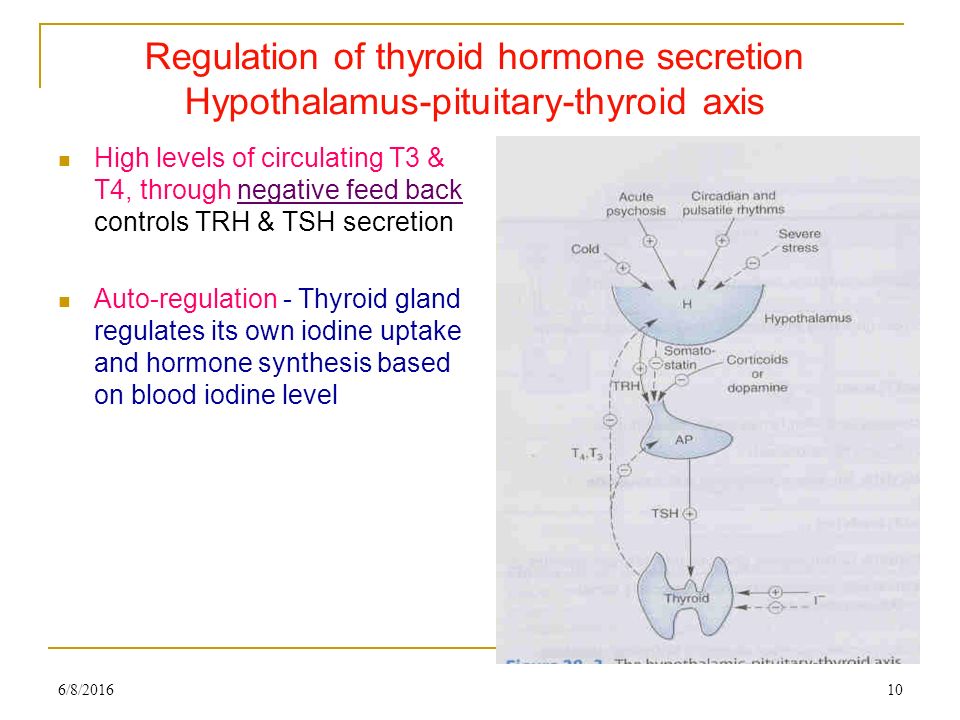Understanding TSH Hormone Levels: Comprehensive Guide to Thyroid Function
What are normal TSH hormone levels. How does TSH affect thyroid function. What causes abnormal TSH levels. How is TSH tested and interpreted. What are the symptoms of thyroid disorders. How are thyroid conditions treated. When should you see a doctor about TSH levels.
The Role of TSH in Thyroid Function
Thyroid-stimulating hormone (TSH) plays a crucial role in regulating thyroid function. Produced by the pituitary gland, TSH acts as a messenger, signaling the thyroid gland to produce and release thyroid hormones. These hormones, primarily thyroxine (T4) and triiodothyronine (T3), are essential for numerous bodily functions, including metabolism, heart rate, body temperature, and energy levels.
Understanding TSH levels is vital for assessing thyroid health. When thyroid hormone levels in the blood are low, the pituitary gland produces more TSH to stimulate the thyroid. Conversely, when thyroid hormone levels are high, TSH production decreases. This feedback loop helps maintain optimal thyroid function.

Normal TSH Levels
Normal TSH levels typically range from 0.4 to 4.0 milliunits per liter (mU/L). However, these values can vary slightly depending on the laboratory and specific testing methods used. It’s important to note that “normal” can differ for individuals based on factors such as age, pregnancy status, and overall health.
- Adults: 0.4 – 4.0 mU/L
- Pregnant women: 0.2 – 3.0 mU/L (varies by trimester)
- Older adults: May have slightly higher upper limits
Are TSH levels the same for everyone? No, individual variations exist, and what’s considered normal can change throughout a person’s lifetime. Regular monitoring and consultation with healthcare providers are essential for accurate interpretation of TSH results.
Common Thyroid Disorders and Their Impact on TSH Levels
Thyroid disorders can significantly affect TSH levels, leading to various health issues. Two primary conditions associated with abnormal TSH levels are hypothyroidism and hyperthyroidism.
Hypothyroidism
Hypothyroidism occurs when the thyroid gland doesn’t produce enough thyroid hormones. This condition is often characterized by elevated TSH levels as the pituitary gland attempts to stimulate the underactive thyroid.
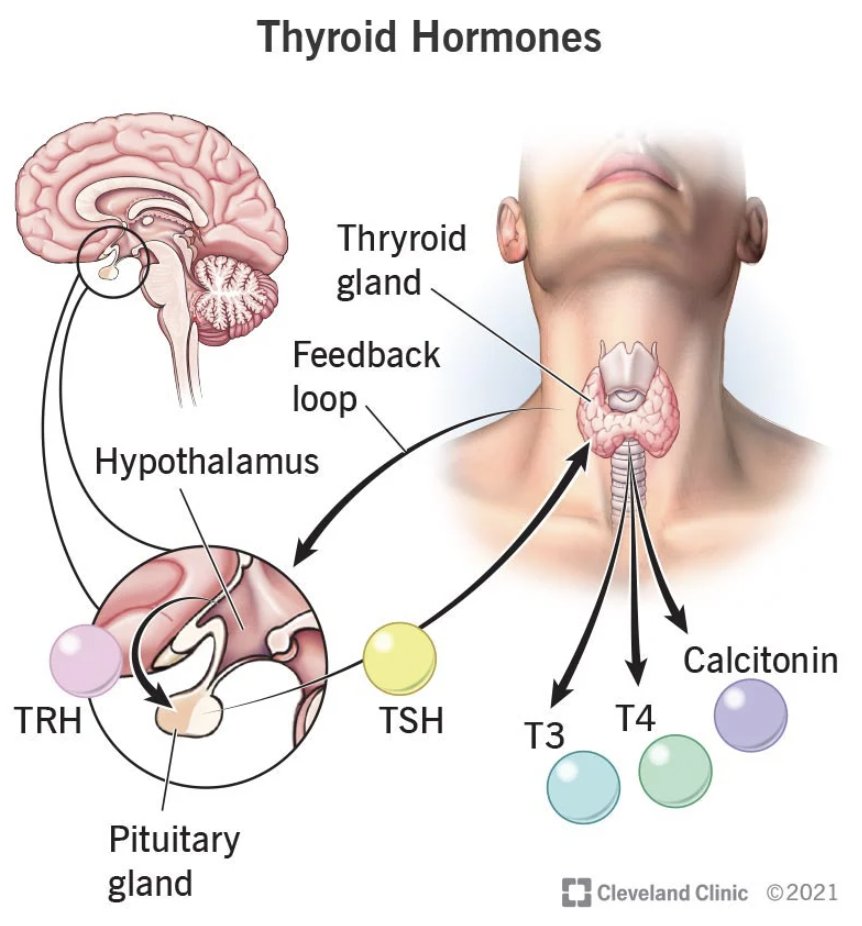
What causes hypothyroidism? The most common cause is Hashimoto’s disease, an autoimmune disorder where the immune system attacks the thyroid. Other causes include:
- Thyroiditis (inflammation of the thyroid)
- Surgical removal of the thyroid
- Radiation treatment
- Certain medications
- Iodine deficiency or excess
Hyperthyroidism
Hyperthyroidism is characterized by an overactive thyroid gland that produces excess thyroid hormones. In this condition, TSH levels are typically suppressed due to the negative feedback loop.
What are the primary causes of hyperthyroidism? The most common cause is Graves’ disease, an autoimmune disorder. Other causes include:
- Toxic nodular goiter
- Thyroiditis
- Excessive iodine intake
- Certain medications
Symptoms and Risk Factors for Thyroid Disorders
Recognizing the symptoms of thyroid disorders is crucial for early detection and treatment. Both hypothyroidism and hyperthyroidism can present with a wide range of symptoms that affect various body systems.
/tsh-test-results-normal-symptoms-3233014_color1-5c1afe9a46e0fb0001eff02b.png)
Symptoms of Hypothyroidism
Common symptoms of hypothyroidism include:
- Fatigue and weakness
- Weight gain
- Increased sensitivity to cold
- Dry skin and hair
- Depression
- Constipation
- Muscle aches and joint pain
- Irregular or heavy menstrual periods
Symptoms of Hyperthyroidism
Hyperthyroidism often presents with symptoms such as:
- Unexplained weight loss
- Rapid heartbeat or palpitations
- Increased appetite
- Nervousness and anxiety
- Tremors in hands and fingers
- Excessive sweating
- Changes in menstrual patterns
- Increased sensitivity to heat
Risk Factors for Thyroid Disorders
Several factors can increase the risk of developing thyroid disorders. These include:
- Gender: Women are more likely to develop thyroid problems
- Age: Risk increases with age, especially after 60
- Family history of thyroid disease
- Autoimmune diseases (e.g., type 1 diabetes, rheumatoid arthritis)
- Radiation exposure to the neck or chest area
- Pregnancy or recent childbirth
- Certain medications
Can lifestyle factors influence thyroid health? While not directly causing thyroid disorders, factors such as stress, poor nutrition, and exposure to environmental toxins may exacerbate existing conditions or contribute to thyroid dysfunction.

Diagnosis and Testing of Thyroid Function
Accurate diagnosis of thyroid disorders involves a combination of clinical evaluation, physical examination, and laboratory tests. The TSH test is often the first step in assessing thyroid function.
TSH Test
The TSH test measures the level of thyroid-stimulating hormone in the blood. It’s considered the most sensitive indicator of thyroid function. High TSH levels often indicate hypothyroidism, while low levels suggest hyperthyroidism.
Additional Thyroid Tests
In addition to TSH, other tests may be performed to get a comprehensive picture of thyroid function:
- Free T4 (thyroxine) test
- Free T3 (triiodothyronine) test
- Thyroid antibody tests (for autoimmune thyroid disorders)
- Thyroid ultrasound (to examine thyroid structure)
How often should thyroid function be tested? For individuals with no known thyroid issues, screening every 5 years is generally recommended, starting at age 35. Those with risk factors or existing thyroid conditions may require more frequent testing.
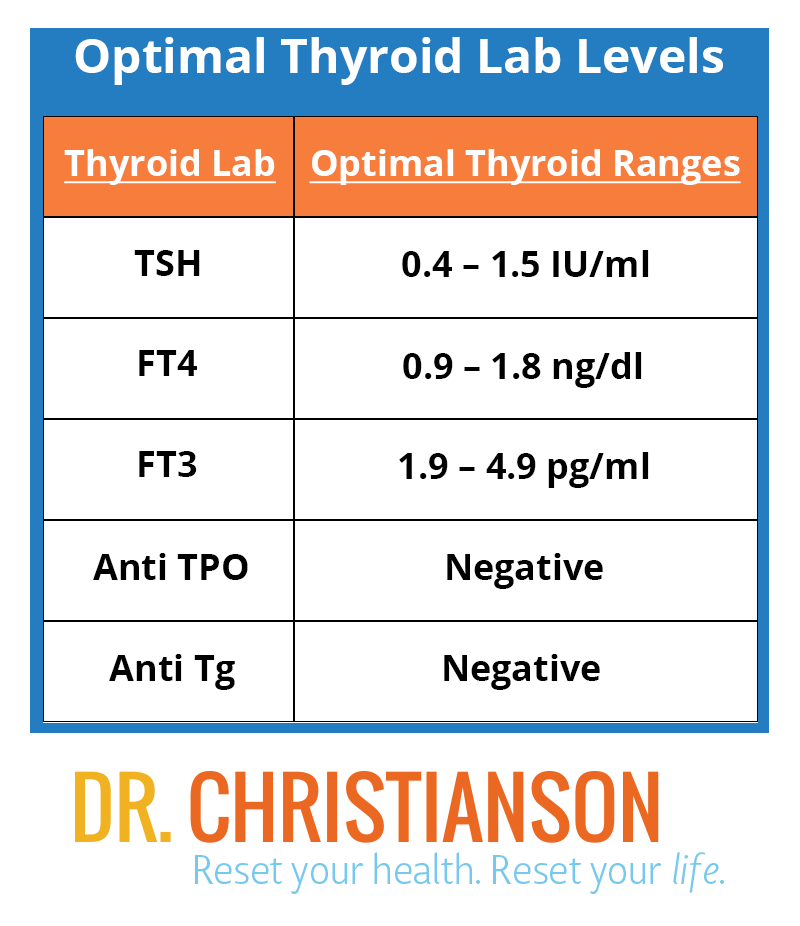
Treatment Options for Thyroid Disorders
Treatment for thyroid disorders aims to restore normal thyroid function and alleviate symptoms. The approach varies depending on whether the condition is hypothyroidism or hyperthyroidism.
Treatment for Hypothyroidism
The primary treatment for hypothyroidism is thyroid hormone replacement therapy. This typically involves taking a synthetic form of thyroxine (T4) called levothyroxine. The medication is taken orally, usually once daily.
Key points about hypothyroidism treatment:
- Dosage is individualized based on TSH levels and symptoms
- Regular blood tests are necessary to monitor hormone levels and adjust dosage
- Treatment is usually lifelong
- Proper timing and consistency in taking medication are crucial for effectiveness
Treatment for Hyperthyroidism
Treatment options for hyperthyroidism include:
- Antithyroid medications: These drugs help reduce thyroid hormone production
- Radioactive iodine therapy: This treatment destroys overactive thyroid cells
- Surgery (thyroidectomy): Removal of part or all of the thyroid gland
- Beta-blockers: These may be used to manage symptoms like rapid heart rate
The choice of treatment depends on factors such as the underlying cause, severity of symptoms, age, and overall health.
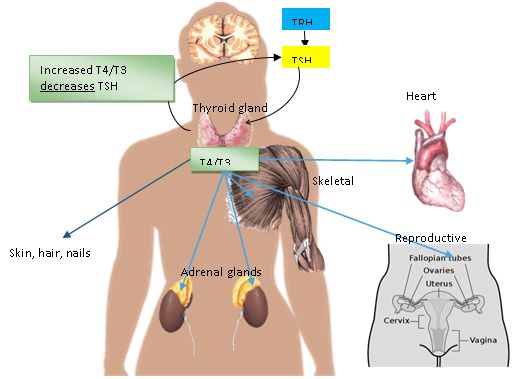
Can thyroid disorders be managed with lifestyle changes alone? While lifestyle modifications can support thyroid health, they’re typically not sufficient to treat diagnosed thyroid disorders without medical intervention.
Living with Thyroid Disorders: Management and Lifestyle Considerations
Managing thyroid disorders involves more than just medication. Lifestyle factors play a significant role in overall thyroid health and symptom management.
Nutrition and Diet
A balanced diet is crucial for thyroid health. Key considerations include:
- Iodine intake: Essential for thyroid hormone production, but excessive amounts can be harmful
- Selenium-rich foods: Support thyroid function
- Limiting goitrogens: Some foods can interfere with thyroid function when consumed in large amounts
- Timing of medication: Take thyroid medication on an empty stomach, away from certain foods and supplements
Exercise and Physical Activity
Regular exercise can help manage symptoms and improve overall well-being. Benefits include:
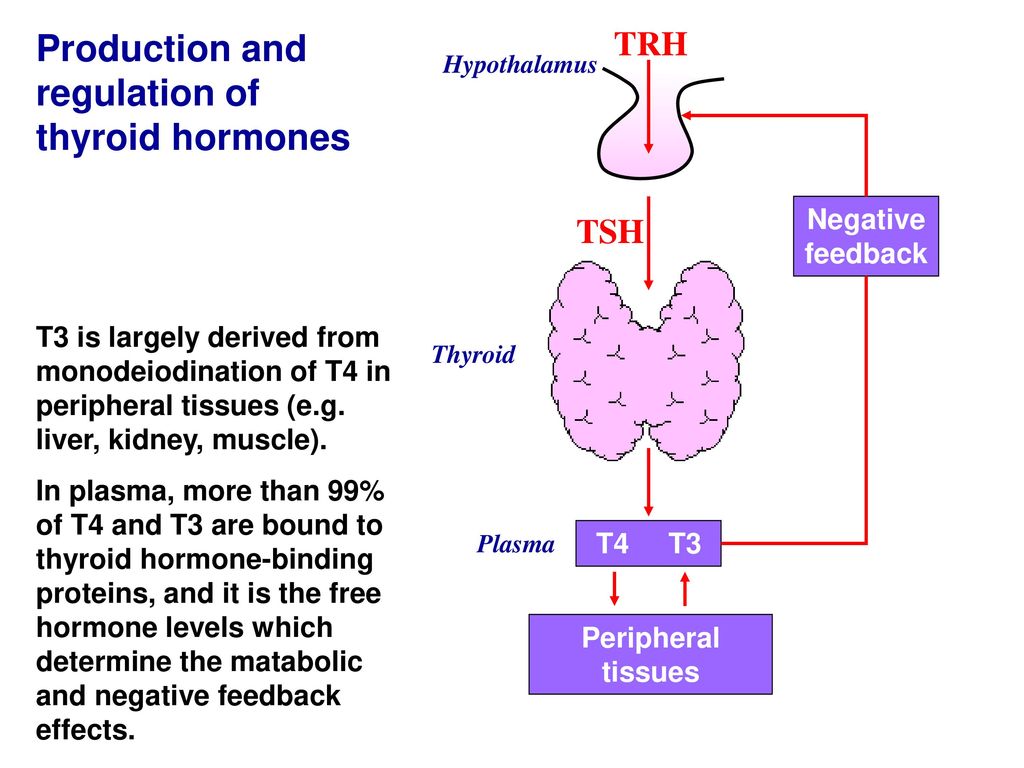
- Weight management
- Improved mood and energy levels
- Better sleep quality
- Enhanced cardiovascular health
Stress Management
Chronic stress can exacerbate thyroid symptoms. Effective stress-reduction techniques include:
- Meditation and mindfulness practices
- Yoga
- Deep breathing exercises
- Regular relaxation time
Regular Monitoring
Consistent follow-up with healthcare providers is essential. This includes:
- Regular blood tests to check thyroid hormone levels
- Adjusting medication as needed
- Monitoring for potential complications
How can patients actively participate in managing their thyroid health? Keeping a symptom diary, adhering to medication schedules, and openly communicating with healthcare providers are effective ways for patients to take an active role in their thyroid health management.
Advances in Thyroid Research and Future Directions
The field of thyroid research is continuously evolving, with new discoveries and treatment approaches emerging. Recent advancements and areas of ongoing research include:

Precision Medicine
Researchers are exploring ways to tailor thyroid treatments to individual genetic profiles, potentially improving treatment efficacy and reducing side effects.
Novel Diagnostic Tools
New diagnostic techniques, such as advanced imaging and molecular testing, are being developed to enhance the accuracy and early detection of thyroid disorders.
Alternative Therapies
Studies are investigating the potential benefits of complementary therapies, such as herbal supplements and acupuncture, in supporting thyroid health.
Autoimmune Research
Ongoing research into the underlying mechanisms of autoimmune thyroid disorders may lead to new preventive strategies and treatments.
What potential breakthroughs can we expect in thyroid treatment? While it’s difficult to predict specific outcomes, areas such as gene therapy, immunomodulation, and regenerative medicine hold promise for future thyroid treatments.
When to Consult a Healthcare Provider
Recognizing when to seek medical attention for thyroid-related concerns is crucial for timely diagnosis and treatment. Consider consulting a healthcare provider if you experience:
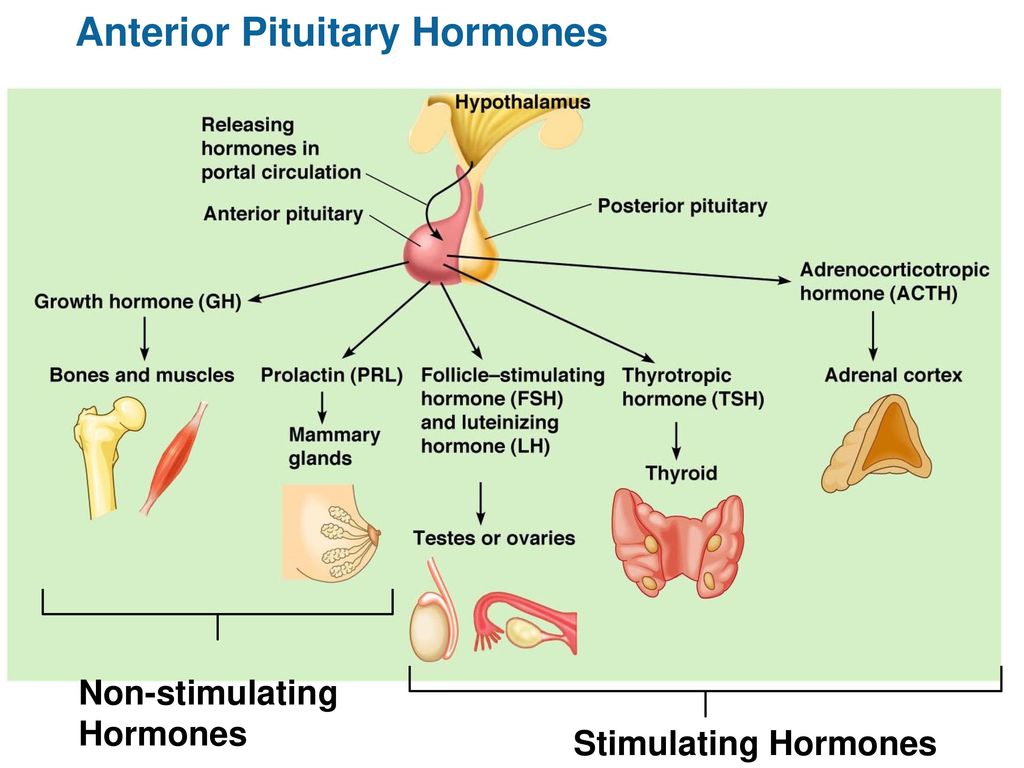
- Persistent fatigue or unexplained changes in energy levels
- Significant weight changes without apparent cause
- Changes in heart rate or rhythm
- Mood swings, anxiety, or depression
- Irregular menstrual cycles
- Difficulty conceiving or maintaining pregnancy
- Changes in bowel habits or digestion
- Unusual skin changes or hair loss
Additionally, individuals with risk factors for thyroid disorders should discuss regular screening with their healthcare providers. Early detection and management can prevent complications and improve overall quality of life.
How often should thyroid function be evaluated in high-risk individuals? For those with known risk factors, annual thyroid function tests are often recommended, but the frequency may vary based on individual circumstances and medical history.
In conclusion, understanding TSH hormone levels and thyroid function is essential for maintaining overall health. By recognizing symptoms, understanding risk factors, and seeking appropriate medical care, individuals can effectively manage thyroid disorders and minimize their impact on daily life. As research in this field continues to advance, we can look forward to more precise diagnostic tools and targeted treatments, offering hope for improved outcomes for those affected by thyroid conditions.
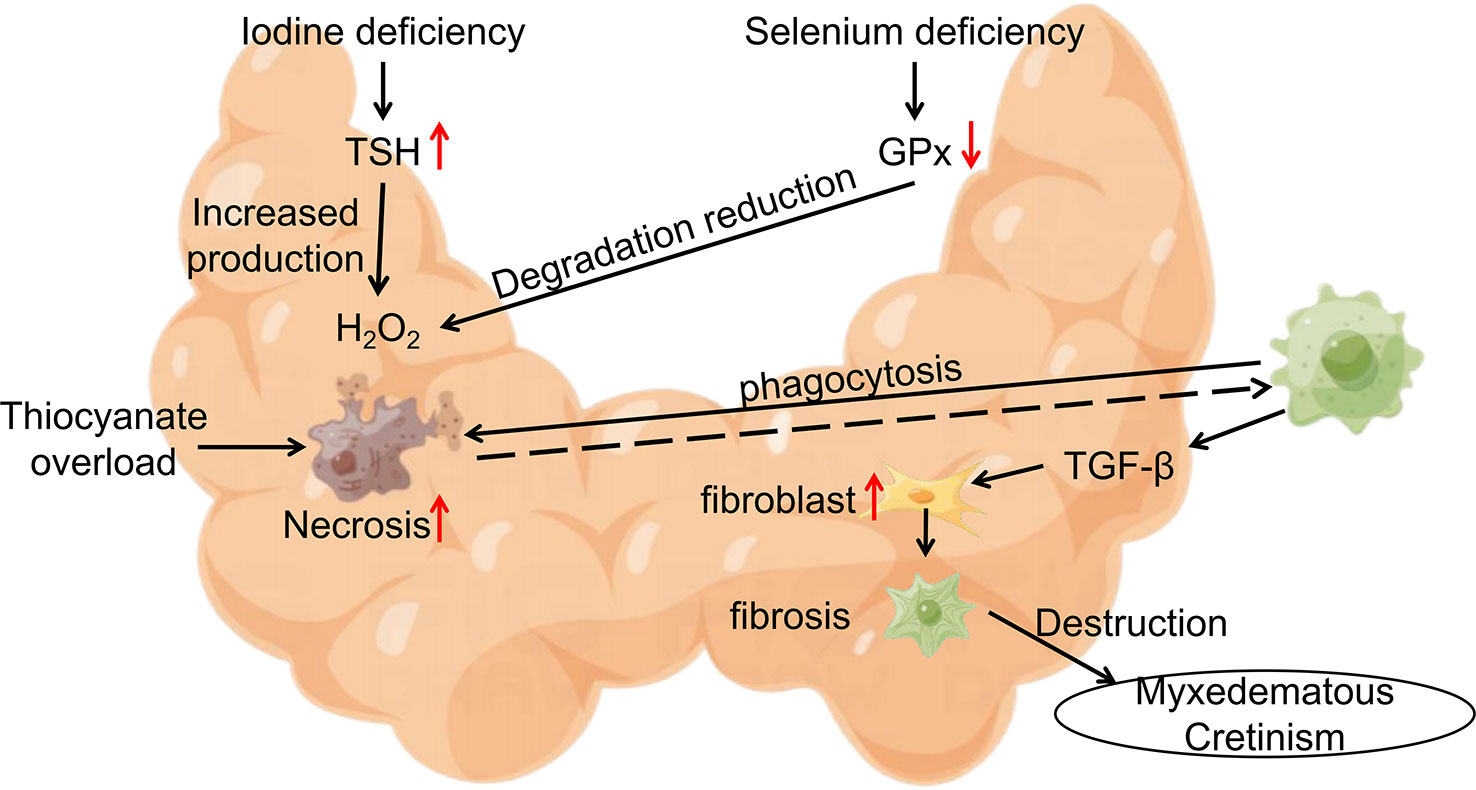
Hypothyroidism | Hashimoto’s Disease | MedlinePlus
What is hypothyroidism?
Hypothyroidism, or underactive thyroid, happens when your thyroid gland doesn’t make enough thyroid hormones to meet your body’s needs.
Your thyroid is a small, butterfly-shaped gland in the front of your neck. It makes hormones that control the way the body uses energy. These hormones affect nearly every organ in your body and control many of your body’s most important functions. For example, they affect your breathing, heart rate, weight, digestion, and moods. Without enough thyroid hormones, many of your body’s functions slow down. But there are treatments that can help.
What causes hypothyroidism?
Hypothyroidism has several causes. They include
- Hashimoto’s disease, an autoimmune disorder where your immune system attacks your thyroid. This is the most common cause.
- Thyroiditis, inflammation of the thyroid
- Congenital hypothyroidism, hypothyroidism that is present at birth
- Surgical removal of part or all of the thyroid
- Radiation treatment of the thyroid
- Certain medicines
- In rare cases, a pituitary disease or too much or too little iodine in your diet
Who is at risk for hypothyroidism?
You are at higher risk for hypothyroidism if you
- Are a woman
- Are older than age 60
- Have had a thyroid problem before, such as a goiter
- Have had surgery to correct a thyroid problem
- Have received radiation treatment to the thyroid, neck, or chest
- Have a family history of thyroid disease
- Were pregnant or had a baby in the past 6 months
- Have Turner syndrome, a genetic disorder that affects females
- Have pernicious anemia, in which the body cannot make enough healthy red blood cells because it does not have enough vitamin B12
- Have Sjogren’s syndrome, a disease that causes dry eyes and mouth
- Have type 1 diabetes
- Have rheumatoid arthritis, an autoimmune disease that affects the joints
- Have lupus, a chronic autoimmune disease
What are the symptoms of hypothyroidism?
The symptoms of hypothyroidism can vary from person to person and may include
Because hypothyroidism develops slowly, many people don’t notice symptoms of the disease for months or even years.
What other problems can hypothyroidism cause?
Hypothyroidism can contribute to high cholesterol. In rare cases, untreated hypothyroidism can cause myxedema coma. This is a condition in which your body’s functions slow down to the point that it becomes life-threatening.
During pregnancy, hypothyroidism can cause complications, such as premature birth, high blood pressure in pregnancy, and miscarriage. It can also slow the baby’s growth and development.
How is hypothyroidism diagnosed?
Your health care provider may use many tools to make a diagnosis:
- A medical history, including asking about your symptoms
- A physical exam
- Thyroid tests, such as
What are the treatments for hypothyroidism?
The treatment for hypothyroidism is medicine to replace the hormone that your own thyroid can no longer make. About 6 to 8 weeks after you start taking the medicine, you will get a blood test to check your thyroid hormone level.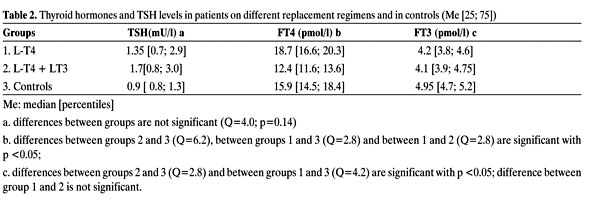 Your health care provider will adjust your dose if needed. Each time your dose is adjusted, you’ll have another blood test. Once you find the right dose, you will probably get a blood test in 6 months. After that, you will need the test once a year.
Your health care provider will adjust your dose if needed. Each time your dose is adjusted, you’ll have another blood test. Once you find the right dose, you will probably get a blood test in 6 months. After that, you will need the test once a year.
If you take your medicine according to the instructions, you usually should be able to control the hypothyroidism. You should never stop taking your medicine without talking with your health care provider first.
If you have Hashimoto’s disease or other types of autoimmune thyroid disorders, you may be sensitive to harmful side effects from iodine. Talk to your health care provider about which foods, supplements, and medicines you need to avoid.
Women need more iodine when they are pregnant because the baby gets iodine from the mother’s diet. If you are pregnant, talk with your health care provider about how much iodine you need.
NIH: National Institute of Diabetes and Digestive and Kidney Diseases
Hyperthyroidism | Graves’ Disease | Overactive Thyroid
What is hyperthyroidism?
Hyperthyroidism, or overactive thyroid, happens when your thyroid gland makes more thyroid hormones than your body needs.
Your thyroid is a small, butterfly-shaped gland in the front of your neck. It makes hormones that control the way the body uses energy. These hormones affect nearly every organ in your body and control many of your body’s most important functions. For example, they affect your breathing, heart rate, weight, digestion, and moods. If not treated, hyperthyroidism can cause serious problems with your heart, bones, muscles, menstrual cycle, and fertility. But there are treatments that can help.
What causes hyperthyroidism?
Hyperthyroidism has several causes. They include
- Grave’s disease, an autoimmune disorder in which your immune system attacks your thyroid and causes it to make too much hormone. This is the most common cause.
- Thyroid nodules, which are growths on your thyroid. They are usually benign (not cancer). But they may become overactive and make too much thyroid hormone. Thyroid nodules are more common in older adults.
- Thyroiditis, inflammation of the thyroid.
 It causes stored thyroid hormone to leak out of your thyroid gland.
It causes stored thyroid hormone to leak out of your thyroid gland. - Too much iodine. Iodine is found in some medicines, cough syrups, seaweed and seaweed-based supplements. Taking too much of them can cause your thyroid to make too much thyroid hormone.
- Too much thyroid medicine. This can happen if people who take thyroid hormone medicine for hypothyroidism (underactive thyroid) take too much of it.
Who is at risk for hyperthyroidism?
You are at higher risk for hyperthyroidism if you
- Are a woman
- Are older than age 60
- Have been pregnant or had a baby within the past 6 months
- Have had thyroid surgery or a thyroid problem, such as goiter
- Have a family history of thyroid disease
- Have pernicious anemia, in which the body cannot make enough healthy red blood cells because it does not have enough vitamin B12
- Have type 1 diabetes or primary adrenal insufficiency, a hormonal disorder
- Get too much iodine, from eating large amounts of foods containing iodine or using iodine-containing medicines or supplements
What are the symptoms of hyperthyroidism?
The symptoms of hyperthyroidism can vary from person to person and may include
- Nervousness or irritability
- Fatigue
- Muscle weakness
- Trouble tolerating heat
- Trouble sleeping
- Tremor, usually in your hands
- Rapid and irregular heartbeat
- Frequent bowel movements or diarrhea
- Weight loss
- Mood swings
- Goiter, an enlarged thyroid that may cause your neck to look swollen.
 Sometimes it can cause trouble with breathing or swallowing.
Sometimes it can cause trouble with breathing or swallowing.
Adults over age 60 may have different symptoms than younger adults. For example, they may lose their appetite or withdraw from other people. Sometimes this can be mistaken for depression or dementia.
What other problems can hyperthyroidism cause?
If hyperthyroidism isn’t treated, it can cause some serious health problems, including
- An irregular heartbeat that can lead to blood clots, stroke, heart failure, and other heart problems
- An eye disease called Graves’ ophthalmopathy. It can cause double vision, light sensitivity, and eye pain. In rare cases, it can lead to vision loss.
- Thinning bones and osteoporosis
- Fertility problems in women
- Complications in pregnancy, such as premature birth, low birth weight, high blood pressure in pregnancy, and miscarriage
How is hyperthyroidism diagnosed?
Your health care provider may use many tools to make a diagnosis:
- A medical history, including asking about symptoms
- A physical exam
- Thyroid tests, such as
What are the treatments for hyperthyroidism?
The treatments for hyperthyroidism include medicines, radioiodine therapy, and thyroid surgery:
- Medicines for hyperthyroidism include
- Antithyroid medicines, which cause your thyroid to make less thyroid hormone.
 You probably need to take the medicines for 1 to 2 years. In some cases, you might need to take the medicines for several years. This is the simplest treatment, but it is often not a permanent cure.
You probably need to take the medicines for 1 to 2 years. In some cases, you might need to take the medicines for several years. This is the simplest treatment, but it is often not a permanent cure. - Beta blocker medicines, which can reduce symptoms such as tremors, rapid heartbeat, and nervousness. They work quickly and can help you feel better until other treatments take effect.
- Antithyroid medicines, which cause your thyroid to make less thyroid hormone.
- Radioiodine therapy is a common and effective treatment for hyperthyroidism. It involves taking radioactive iodine by mouth as a capsule or liquid. This slowly destroys the cells of the thyroid gland that produce thyroid hormone. It does not affect other body tissues. Almost everyone who has radioactive iodine treatment later develops hypothyroidism. This is because the thyroid hormone-producing cells have been destroyed. But hypothyroidism is easier to treat and causes fewer long-term health problems than hyperthyroidism.
- Surgery to remove part or most of the thyroid gland is done in rare cases.
 It might be an option for people with large goiters or pregnant women who cannot take antithyroid medicines. If you have all of your thyroid removed, you will need to take thyroid medicines for the rest of your life. Some people who have part of their thyroid removed also need to take medicines.
It might be an option for people with large goiters or pregnant women who cannot take antithyroid medicines. If you have all of your thyroid removed, you will need to take thyroid medicines for the rest of your life. Some people who have part of their thyroid removed also need to take medicines.
If you have hyperthyroidism, it’s important not to get too much iodine. Talk to your health care provider about which foods, supplements, and medicines you need to avoid.
NIH: National Institute of Diabetes and Digestive and Kidney Diseases
T3 (triiodothyronine) Test | UCLA Health
What is a T3 (triiodothyronine) Test?
Definition:
The T3 test measures the amount of T3 hormone in the blood.
Alternative Names: Triiodothyronine; T3 radioimmunoassay
How the test is performed:
Blood is drawn from a vein on the inside of the elbow or the back of the hand. The puncture site is cleaned with antiseptic, and an elastic band is placed around the upper arm to apply pressure and restrict blood flow through the vein.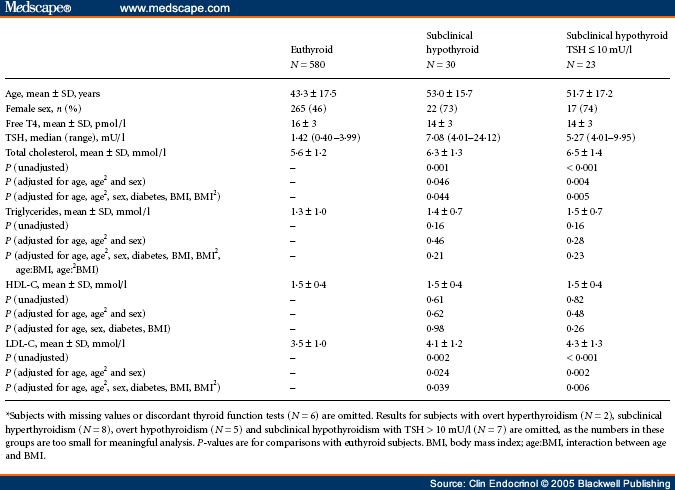 This causes veins below the band to swell with blood.
This causes veins below the band to swell with blood.
A needle is inserted into the vein, and the blood is collected in an air-tight vial or a syringe. During the procedure, the band is removed to restore circulation. Once the blood has been collected, the needle is removed, and the puncture site is covered to stop any bleeding.
For an infant or young child, the area is cleansed with antiseptic and punctured with a sharp needle or a lancet. The blood may be collected in a pipette (small glass tube), on a slide, onto a test strip, or into a small container. Cotton or a bandage may be applied to the puncture site if there is any continued bleeding.
How to prepare for the test:
The health care provider may advise you to stop taking drugs that may affect the test (see “special considerations”).
For infants and children:
The preparation you can provide for this test depends on your child’s age and experience. For specific information regarding how you can prepare your child, see the following topics:
- infant test or procedure preparation (birth to 1 year)
- toddler test or procedure preparation (1 to 3 years)
- preschooler test or procedure preparation (3 to 6 years)
- schoolage test or procedure preparation (6 to 12 years)
- adolescent test or procedure preparation (12 to 18 years)
How the test will feel:
When the needle is inserted to draw blood, some people feel moderate pain, while others feel only a prick or stinging sensation.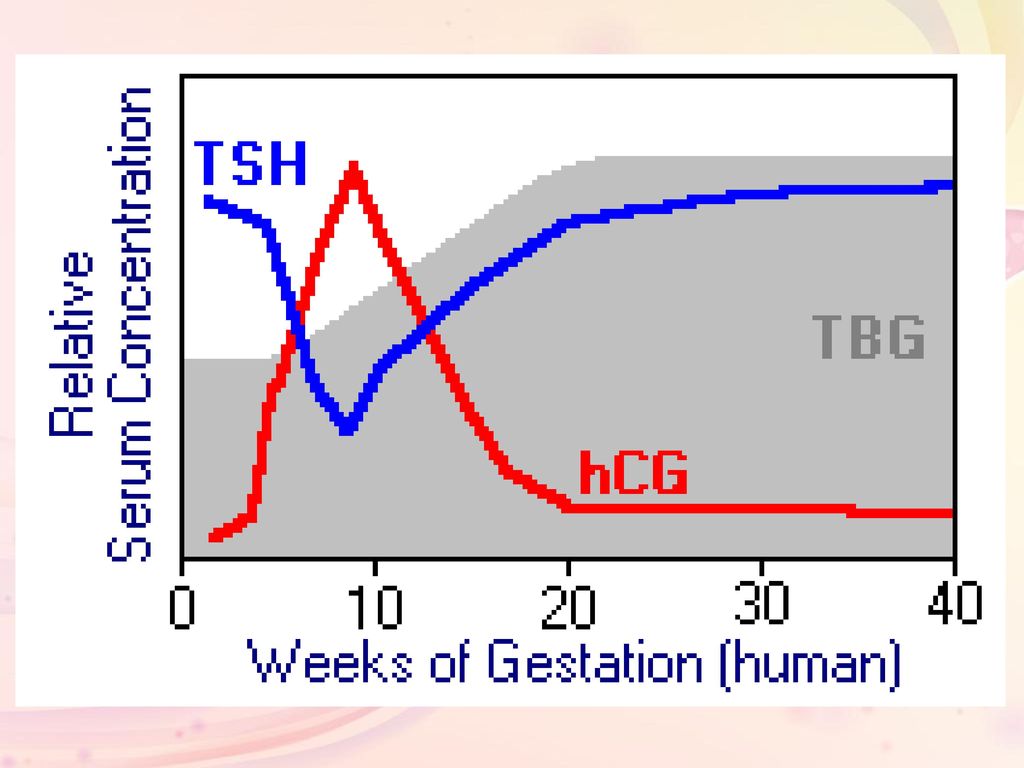 Afterward, there may be some throbbing.
Afterward, there may be some throbbing.
Why the test is performed:
T3 is measured as part of a thyroid function evaluation. Most of the thyroid hormone made in the thyroid is in the form of T4. The body’s cells convert the T4 to T3, which is the more active hormone.
Sometimes it can be useful to measure both T4 and T3 when looking at thyroid function. For example, in some cases of hyperthyroidism, T4 may be normal but T3 will be elevated.
Most of the T4 and T3 in the body is attached to proteins in the blood. These proteins serve as carriers. The T3 test measures both the T3 that is bound to the proteins and the T3 that is “free” floating in the blood. The free fraction is the hormone that is active.
Conditions that increase the levels of the carrier proteins — such as pregnancy and liver disease — will falsely raise the T3 level. In these cases, it is useful to measure either the free T3 level or to perform the RT3U test, which gives a measure of the amount of carrier protein.
T4 and T3 are important hormones in the regulation of metabolism. The exact mechanisms are not understood, but it is known that T4 increases the concentrations of numerous enzymes involved in the production of energy in the body.
Normal Values:
100 to 200 ng/dL (nanograms per deciliter)
What abnormal results mean:
Greater-than-normal levels may indicate:
- hyperthyroidism (for example, Graves’ disease)
- T3 thyrotoxicosis (rare)
- thyroid cancer (rare)
Lower-than-normal levels may indicate:
- chronic illness
- hypothyroidism (for example, Hashimoto’s disease)
- starvation
Additional conditions under which the test may be performed:
- painless (silent) thyroiditis
- thyrotoxic periodic paralysis
- toxic nodular goiter
What the risks are:
The only risks of the test is those minor risks associated with having blood drawn.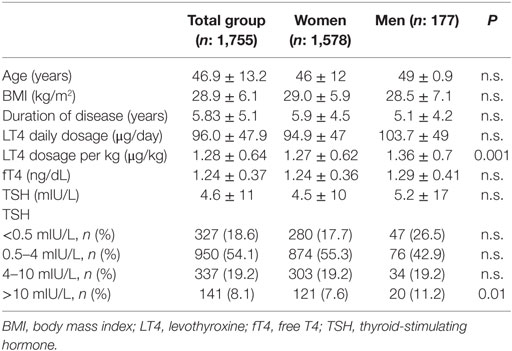
Special considerations:
Drugs that can increase T3 measurements include clofibrate, estrogens, methadone, and oral contraceptives.
Drugs that can decrease T3 measurements include anabolic steroids, androgens, antithyroid drugs (for example, propylthiouracil), lithium, phenytoin, and propranolol.
High and Low TSH Levels: Meanings and Variations
It’s important to understand the meaning of both high thyroid-stimulating hormone (TSH) and low TSH. This applies whether you have been living with thyroid disease for a long time or are only having the test to screen for a thyroid disorder.
A high TSH level can mean a new diagnosis of hypothyroidism, or an underactive thyroid. A low TSH might mean hyperthyroidism, or an overactive thyroid. That said, there are exceptions to these interpretations, as well as what a “normal” level means for you.
This article covers the causes of both high and low TSH levels along with several reasons TSH levels may change. You will also learn about testing for thyroid disorder and a number factors that may impact your results.
You will also learn about testing for thyroid disorder and a number factors that may impact your results.
What Is TSH?
TSH—short for thyroid-stimulating hormone—is a hormone that acts as a messenger to the thyroid gland. When released by the pituitary gland—a small gland at the base of the brain—it stimulates the production of more thyroid hormone.
How TSH Levels Change
TSH levels are not very intuitive. Why does a high TSH mean you have an underactive thyroid gland? Why do low levels means the gland is overactive?
Understanding exactly how the thyroid gland works can help.
Your thyroid gland produces thyroid hormone. When it functions properly, your thyroid is part of a feedback loop with your pituitary gland that involves several actions:
First, your pituitary gland senses the level of thyroid hormone that is released into the bloodstream.
Your pituitary then releases the special messenger hormone TSH, which makes the thyroid release more thyroid hormone. From there:
From there:
- If your thyroid doesn’t produce enough thyroid hormone, your pituitary triggers your thyroid to make more. (This might happen in cases of illness, stress, or surgery, for example.)
- If your thyroid is overactive and producing too much thyroid hormone, your pituitary senses that and slows or shuts down TSH production.
Interpreting TSH Levels
Verywell / Emily Roberts
Understanding when and why thyroid hormone is released (or not) helps clear up what a low TSH and a high TSH level reveal about your thyroid’s function.
- A high TSH suggests your thyroid is underactive (hypothyroid) and not doing its job of producing enough thyroid hormone.
- A low TSH suggests your thyroid is overactive (hyperthyroid) and producing excess thyroid hormone.
TSH is measured in mU/l. This abbreviation stands for milliunits per litre, with one milliunit equating to one-thousandth of a unit.
The normal range for TSH is generally between 0.5 mU/l and 5.0 mU/l.As with most medical conditions and tests, however, there are exceptions to this rule.
Thyroid hormone levels that are considered normal may be abnormal for you under certain conditions. It’s for this reason that physicians have varied opinions about what the optimal TSH level should be.
Controversy Over Optimal TSH
While most laboratories define a normal TSH as between roughly 0.5 mU/l and 5.0 mU/l, some experts argue that the upper limit of a normal TSH should be lower—around 2.5 mU/l.
The reasoning behind this is that the vast majority of adults without thyroid disease have a TSH value between 0.45 and 4.12 mU/l.
In addition, some physicians believe older patients should have a TSH level that is greater than 4.0 mU/l or 5.0 mU/l, since TSH normally increases with age.
Doctors can avoid some of this controversy simply by looking at each person as an individual.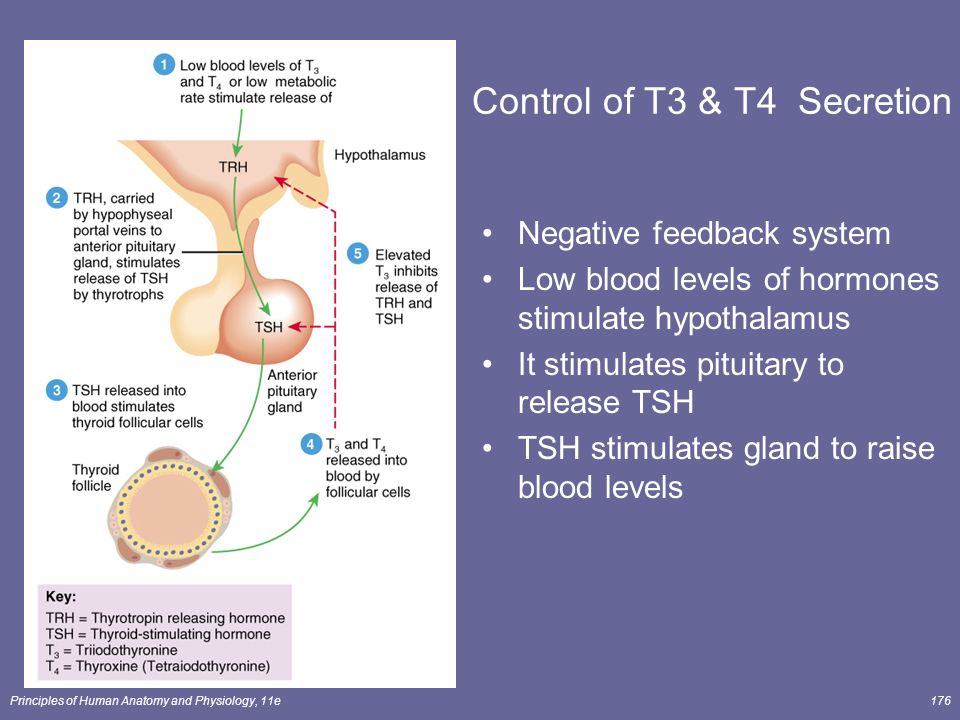 For example, a person who still has significant symptoms of hypothyroidism at a TSH of 4.0 mU/l may do better with a goal TSH of around 1.0 mU/l.
For example, a person who still has significant symptoms of hypothyroidism at a TSH of 4.0 mU/l may do better with a goal TSH of around 1.0 mU/l.
In contrast, someone who has health risks—such as heart disease or osteoporosis—may benefit from having a goal TSH that is higher, perhaps around 5.0 mU/l or 6.0 mU/l.
In pregnancy, TSH should not be allowed to rise above 3.0 mU/l for the health of both the baby and mother.
Recap
A normal TSH value is generally defined as between .5 mU/I and 5.0 mU/I. But opinions about this vary, since everyone has a personal “normal” that depends on their age and overall health.
For example, your target level may be higher if you have heart disease or lower if you are pregnant.
Causes of High TSH
A high TSH means different things depending on whether a person has known thyroid disease or not.
In People Without Known Thyroid Disease
A high TSH in people who are not undergoing thyroid disease treatment usually indicates the presence of primary hypothyroidism.
This is by far the most common form of hypothyroidism, and it occurs because the thyroid gland produces an inadequate amount of thyroid hormones. The pituitary gland senses these low levels and increases the production of TSH.
An elevated TSH may also occur with normal thyroid function due to the presence of antibodies, proteins made by the immune system.
In People Being Treated for Thyroid Disease
A high TSH may be found in people being treated for either hypo- or hyperthyroidism.
With hypothyroidism, a high TSH usually means that the dose of thyroid hormone replacement needs to be increased.
In some cases, however, the dose is OK, but the medication is not being fully absorbed. For example, many foods and medications can affect the absorption of Synthroid (levothyroxine) in your system. Learning what to avoid while taking this medication is important for it to work properly.
With hyperthyroidism, a high TSH usually means that the treatment—be it surgery, radioactive iodine, or medications—was so effective in limiting the production of thyroid hormone it caused the person to become hypothyroid.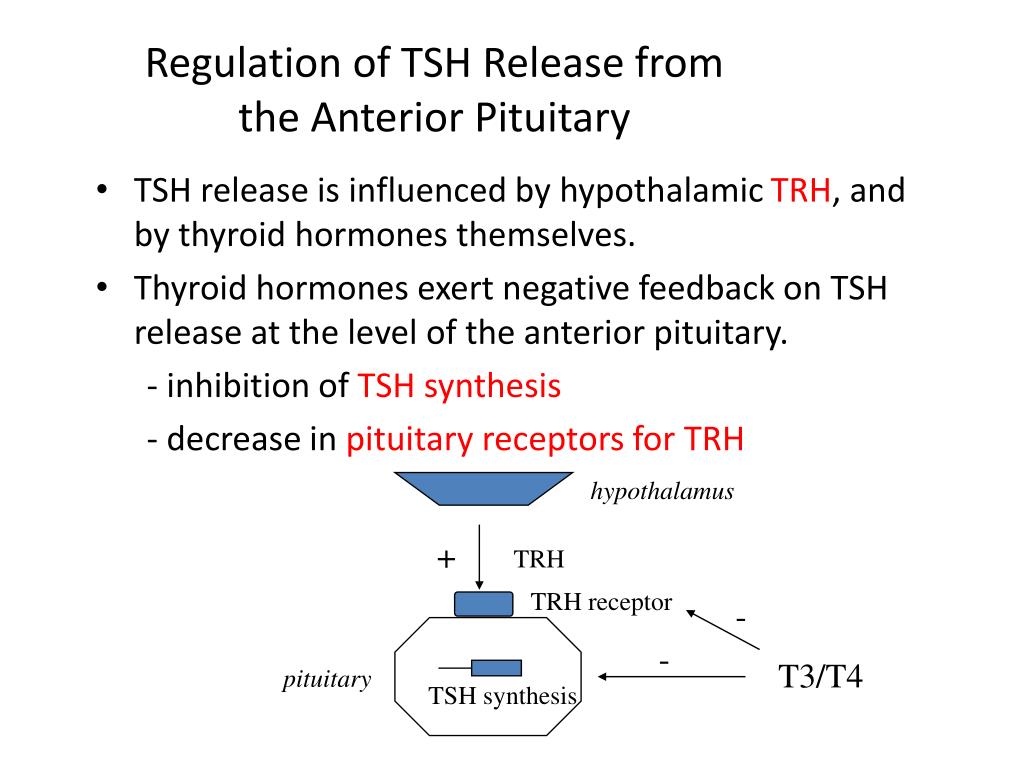
Causes of Low TSH Results
A low TSH often means that a person has an elevated level of thyroid hormones.
In People Without Known Thyroid Disease
Low TSH is most often associated with hyperthyroidism. This can be due to a number of causes, ranging from autoimmune disease to lumps in the thyroid gland (toxic nodules) to an abnormally enlarged thyroid gland (goiter).
It can also occur during a normal pregnancy as thyroid hormones are affected by “the pregnancy hormone” human chorionic gonadotropin (HCG).
Less often, a lack of TSH produced by the pituitary gland (due to dysfunction) can lead to low levels of thyroid hormone in the blood—a condition known as central hypothyroidism. This is an exception to the general rule that hypothyroidism is associated with a high TSH.
Central hypothyroidism is uncommon and usually associated with a deficiency of other pituitary hormones. This deficiency leads to a number of other symptoms as well.
In People With Thyroid Disease
In people being treated for hypothyroidism, a low TSH level may mean:
- Overmedication with thyroid hormone replacement
- Interactions that cause increased absorption or activity despite an optimal dose of medication
- Central hypothyroidism
In people being treated for hyperthyroidism, a low TSH level usually means that further treatment is needed to reduce thyroid hormone levels.
It could also mean that a person must continue to be monitored to make sure thyroid hormone levels return to normal. This is often the case for people who have temporary thyroiditis related to pregnancy or chemotherapy treatment.
Underactive Thyroid + High Thyroid
Underactive Thyroid + Low TSH
Factors That Can Skew TSH Results
There are a number of factors that can affect TSH levels. These are important to consider because lab values don’t tell the whole story about someone’s condition.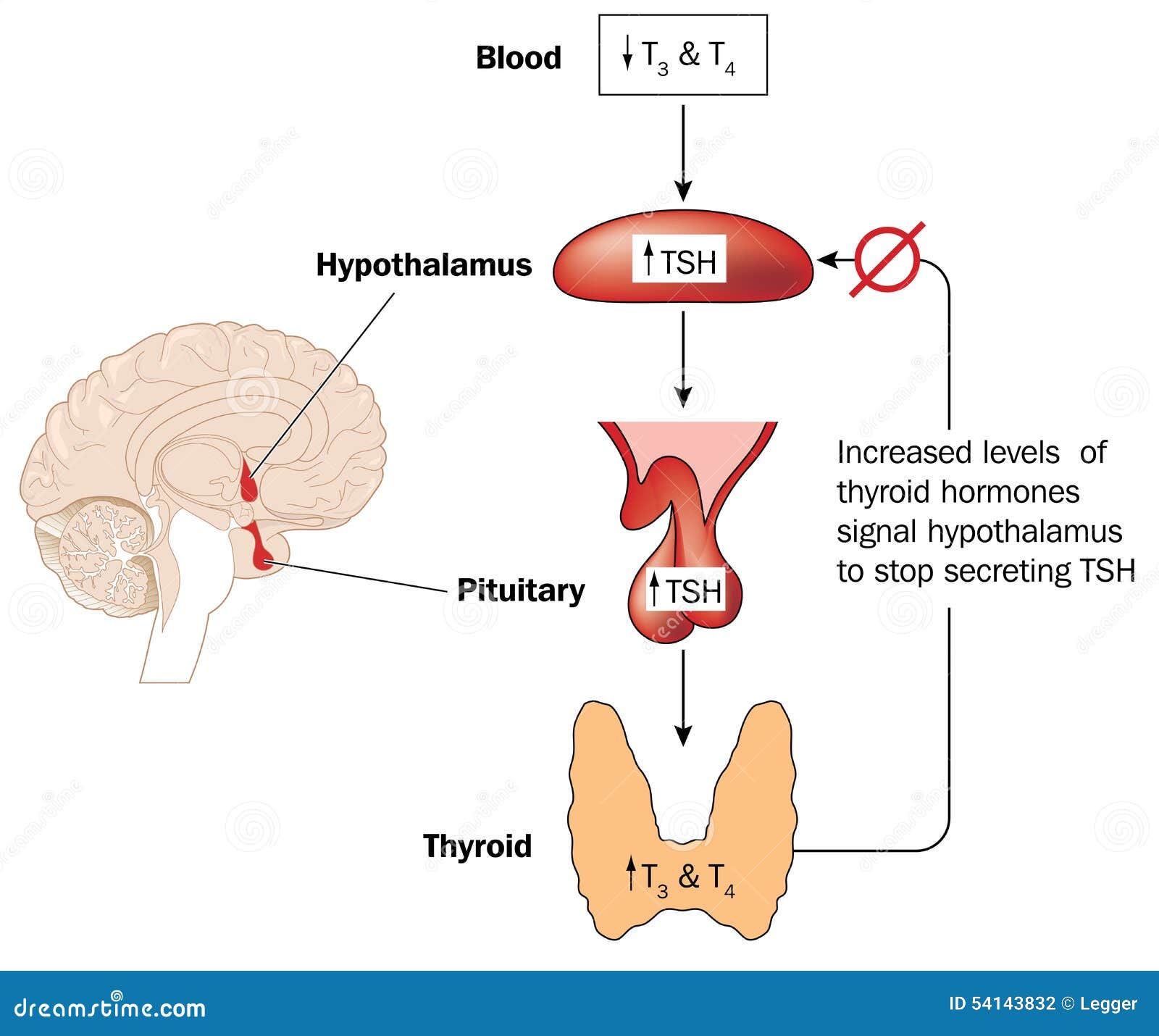
A treatment plan that does not also consider someone’s symptoms may prove to be ineffective.
Laboratory Error
If a TSH test result is unexpected, simply repeating the test is often the best course of action.
Errors can occur during the blood draw, in transcribing the results, or due to mix-ups in the lab. Statistically, there is always a risk of lab error, and results should always be interpreted along with clinical symptoms and findings.
Antibodies
Antibodies are thought to interfere with accurate thyroid testing in roughly 1% of people.
In a 2018 review, such interference caused either misdiagnosis or inappropriate treatment in more than 50% of people who have these antibodies:
- Heterophile antibodies: People exposed to animal-derived drugs and antibody therapies typically have these. A discrepancy between TSH levels and free T4, or between TSH levels and your symptoms, should alert your doctor of a test inaccuracy.

- Thyroid antibodies: These may also affect TSH levels in people who may or may not have a thyroid condition. Again, a discrepancy between lab values and your symptoms should raise the question of test inaccuracy.
- Other antibodies: Anti-ruthenium and anti-streptavidin antibodies can also affect TSH testing results.
Health and Habits
A number of other factors can affect TSH test results, including:
- The time of day that the test is done: If you are tested after fasting—for example, before you have eaten anything for the day—your TSH levels may be higher than if you had eaten just before your test.
- Illness: Acute or chronic illnesses may put stress on your endocrine system, resulting in a skewed test result.
- Pregnancy: TSH levels may be lower than the normal range during pregnancy, regardless of whether or not you have a thyroid disorder.

- Medications: Some medications that are used to treat heart disease and cancer may affect results. Nonsteroidal anti-inflammatory medications, or NSAIDs, like Advil (ibuprofen) can as well.
- Foods or supplements: Items rich in/derived from iodine or kelp may interfere with testing. The same is true about biotin supplements.
- Changes in sleep habits: A lack of quality sleep has been linked with thyroid imbalances.
Testing Method
A capillary finger prick test, or blood spot test, is a somewhat controversial alternative to traditional TSH testing.
It uses a finger prick rather than a standard blood draw from your vein to evaluate thyroid function. Blood spot testing kits have also been developed so that you can monitor your TSH level from home.
Proponents of this test believe that it ensures greater accuracy without requiring as much of a sample as a venous blood draw.
However, since the test is not widely available right now, it’s unknown exactly how well the test compares with conventional TSH testing.
Recap
No lab test is 100% accurate, including the TSH test. Do your part to help get the most accurate results by being as consistent as possible when it comes to the conditions under which you are tested.
For example, always have your test done at the same time of day, postpone your appointment if you are sick, and be sure you’re always getting quality sleep.
When TSH Alone Is Not Enough
During diagnosis, most doctors use the TSH test to evaluate thyroid function and determine the optimal course of treatment. There are times, however, when knowing one’s TSH may be insufficient.
For instance, free T4 in addition to TSH is usually tested if a doctor suspects thyroid dysfunction due to disease of the pituitary gland or hypothalamus.
Likewise, if the TSH is normal, but a person still has symptoms of being hyperthyroid or hypothyroid, free T4 may be checked.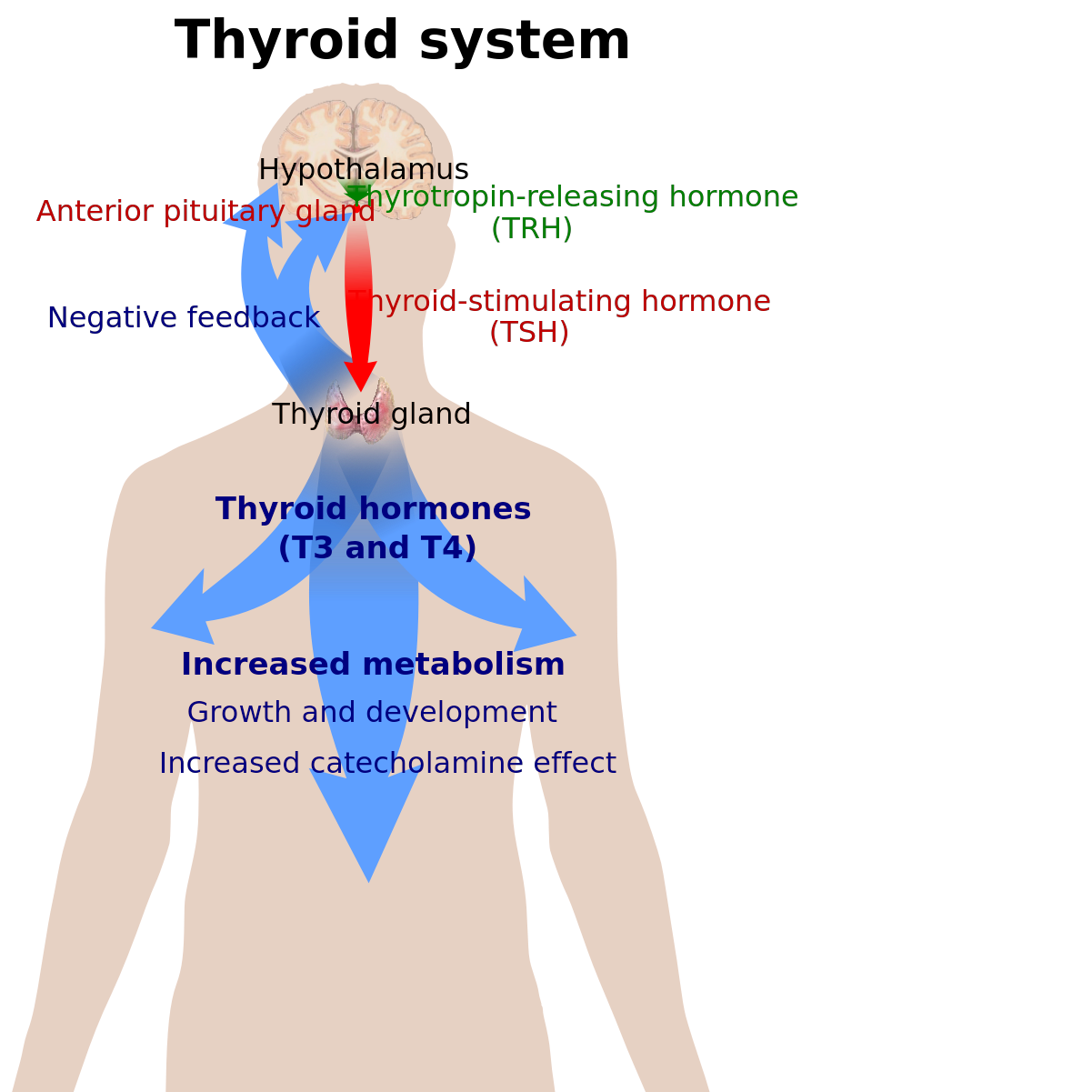
TSH is also not necessarily sufficient to monitor hypothyroidism during pregnancy; T4 and free T4 are often recommended.
Depending on the clinical situation, other thyroid tests that may be done include triiodothyronine (T3), free T3, reverse T3, and thyroid antibody tests.
Summary
A TSH level that is optimal for all people cannot quite be established. That’s because TSH levels vary depending on numerous factors, including your age, your thyroid condition, and possibly even how well you sleep at night or when you last ate.
To gauge the optimal level for you, your doctor should consider these factors along with any symptoms you are experiencing.
You can also improve the accuracy of your tests by keeping any factors that may influence your results as consistent as possible.
Frequently Asked Questions
What is the normal range for TSH levels?
The normal range for TSH is between 0. 5 mU/l and 5.0 mU/l.
5 mU/l and 5.0 mU/l.
What does it mean when your TSH levels are low?
A low TSH level—below 0.5 mU/l—indicates an overactive thyroid, also known as hyperthyroidism. This means your body is producing an excess amount of thyroid hormone.
What causes high TSH levels?
A high TSH level—above 5.0 mU/l—indicates an underactive thyroid, also known as hypothyroidism. This means your body is not producing enough thyroid hormone.
5 Common Misconceptions About Thyroid Disease
A Word From Verywell
The TSH test is the gold standard in diagnosing and monitoring thyroid disease. But as with any medical test, there are exceptions to what the test results may mean, as well as situations in which the test may be inaccurate.
It is entirely possible that you may still have symptoms despite a normal TSH level. If this is the case, speak up. Even a “normal” TSH may be abnormal for you.
And if you don’t feel you are being heard, consider seeking a second opinion.
Hypothyroidism – Diagnosis and treatment
Diagnosis
In general, your doctor may test for an underactive thyroid if you are feeling increasingly tired, have dry skin, constipation and weight gain, or have had previous thyroid problems or a goiter.
Blood tests
Diagnosis of hypothyroidism is based on your symptoms and the results of blood tests that measure the level of TSH and sometimes the level of the thyroid hormone thyroxine. A low level of thyroxine and high level of TSH indicate an underactive thyroid. That’s because your pituitary produces more TSH in an effort to stimulate your thyroid gland into producing more thyroid hormone.
Doctors can diagnose thyroid disorders much earlier than in the past — often before you experience symptoms. Because the TSH test is the best screening test, your doctor will likely check TSH first and follow with a thyroid hormone test if needed.
TSH tests also play an important role in managing hypothyroidism. They help your doctor determine the right dosage of medication, both initially and over time.
In addition, TSH tests are used to help diagnose a condition called subclinical hypothyroidism, which usually causes no outward signs or symptoms. In this condition, you have normal blood levels of triiodothyronine and thyroxine, but higher than normal levels of TSH.
There are certain factors that can affect blood tests for thyroid problems. One is the blood-thinning medication called heparin. Another is biotin, a vitamin taken as a stand-alone supplement or as part of a multivitamin. Let your doctor know about any medications or supplements you take before having blood tests done.
Treatment
Standard treatment for hypothyroidism involves daily use of the synthetic thyroid hormone levothyroxine (Levo-T, Synthroid, others). This oral medication restores adequate hormone levels, reversing the signs and symptoms of hypothyroidism.
You’ll likely start to feel better soon after you start treatment. The medication gradually lowers cholesterol levels elevated by the disease and may reverse any weight gain. Treatment with levothyroxine will likely be lifelong, but because the dosage you need may change, your doctor is likely to check your TSH level every year.
Determining proper dosage may take time
To determine the right dosage of levothyroxine initially, your doctor generally checks your level of TSH after six to eight weeks. After that, blood levels are generally checked six months later. Excessive amounts of the hormone can cause side effects, such as:
- Increased appetite
- Insomnia
- Heart palpitations
- Shakiness
If you have coronary artery disease or severe hypothyroidism, your doctor may start treatment with a smaller amount of medication and gradually increase the dosage. Progressive hormone replacement allows your heart to adjust to the increase in metabolism.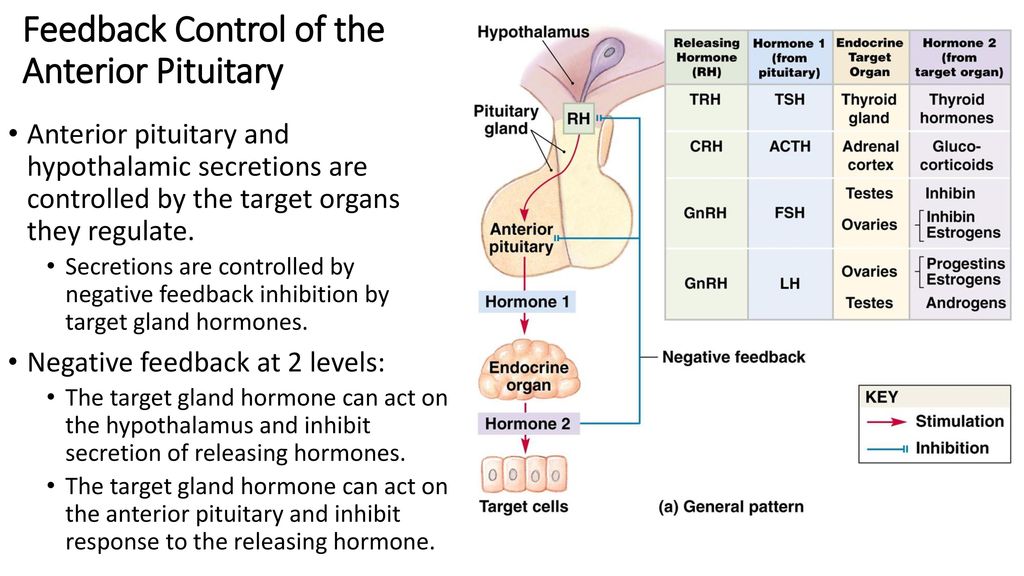
Levothyroxine causes virtually no side effects when used in the appropriate dose and is relatively inexpensive. If you change brands, let your doctor know to ensure you’re still receiving the right dosage.
Also, don’t skip doses or stop taking the drug because you’re feeling better. If you do, the symptoms of hypothyroidism will gradually return.
Proper absorption of levothyroxine
Certain medications, supplements and even some foods may affect your ability to absorb levothyroxine. Talk to your doctor if you eat large amounts of soy products or a high-fiber diet or you take other medications, such as:
- Iron supplements or multivitamins that contain iron
- Aluminum hydroxide, which is found in some antacids
- Calcium supplements
Levothyroxine is best taken on an empty stomach at the same time every day. Ideally, you’ll take the hormone in the morning and wait an hour before eating or taking other medications. If you take it at bedtime, wait four hours after your last meal or snack.
If you take it at bedtime, wait four hours after your last meal or snack.
If you miss a dose of levothyroxine, take two pills the next day.
Subclinical hypothyroidism
If you have subclinical hypothyroidism, discuss treatment with your doctor. For a relatively mild increase in TSH, you probably won’t benefit from thyroid hormone therapy, and treatment could even be harmful. On the other hand, for a higher TSH level, thyroid hormones may improve your cholesterol level, the pumping ability of your heart and your energy level.
More Information
Show more related information
Alternative medicine
Although most doctors recommend synthetic thyroxine, natural extracts containing thyroid hormone derived from the thyroid glands of pigs are available. These products contain both thyroxine and triiodothyronine. Synthetic thyroid medications contain thyroxine only, and the triiodothyronine your body needs is derived from the thyroxine.
Extracts are available by prescription only and shouldn’t be confused with the glandular concentrates sold in natural foods stores. These products aren’t regulated by the Food and Drug Administration, and their potency and purity isn’t guaranteed.
Preparing for your appointment
You’ll likely start by seeing your family doctor or a general practitioner. In some cases, you may be referred to a doctor who specializes in the body’s hormone-secreting glands (endocrinologist). Infants with hypothyroidism need immediate referral to a pediatrics endocrinologist for treatment. Children or teens need to see a pediatric endocrinologist if there is any uncertainly about starting levothyroxine or proper dosing of the hormone.
Here’s some information to help you get ready for your appointment and know what to expect from your doctor.
What you can do
- Be aware of any pre-appointment restrictions.
 At the time you make the appointment, be sure to ask if there’s anything you need to do in advance.
At the time you make the appointment, be sure to ask if there’s anything you need to do in advance. - Write down any symptoms you’re experiencing, including any that may seem unrelated to the reason for which you scheduled the appointment.
- Write down key personal information, including any major stresses or recent life changes.
- Make a list of all medications, vitamins or supplements you’re taking.
- Take a family member or friend along, if possible. Someone who accompanies you may remember something that you missed or forgot.
- Write down questions to ask your doctor.
Preparing a list of questions will help you make the most of your time with your doctor. For hypothyroidism, some basic questions to ask include:
- What’s the most likely cause of my symptoms?
- What tests do I need?
- Is my condition likely temporary or long lasting?
- What treatments are available, and which do you recommend?
- I have these other health conditions.
 How can I best manage them together?
How can I best manage them together? - Are there restrictions I need to follow?
- Should I see a specialist?
- Is there a generic alternative to the medicine you’re prescribing?
- Are there brochures or other printed material I can take with me? What websites do you recommend?
Don’t hesitate to ask any other relevant questions you have.
What to expect from your doctor
Your doctor is likely to ask you a number of questions, including:
- When did you begin experiencing symptoms?
- Have your symptoms been continuous or occasional?
- How severe are your symptoms?
- What, if anything, seems to improve your symptoms?
- What, if anything, appears to worsen your symptoms?
- Do you have a family history of thyroid disease?
Nov. 19, 2020
Blood Test: Thyroid Stimulating Hormone (TSH) (for Parents)
What It Is
A thyroid stimulating hormone (TSH) test is a common blood test used to evaluate how well the thyroid gland is working.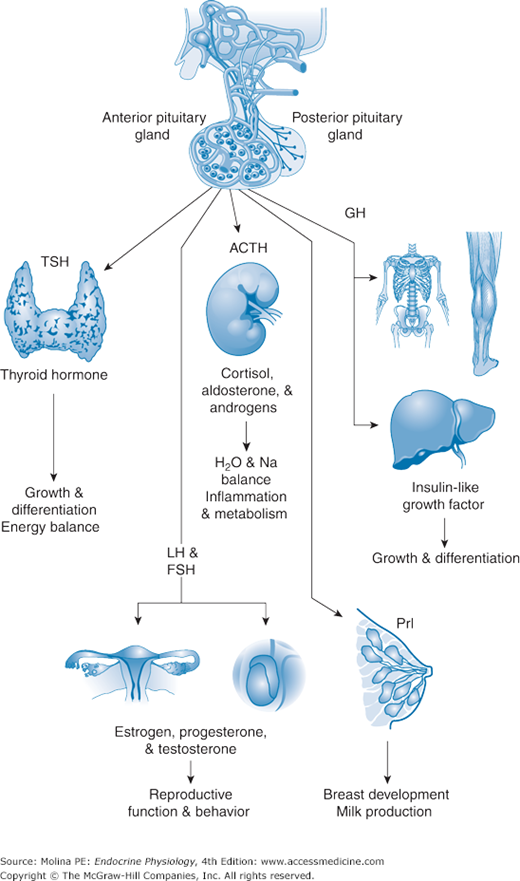 The thyroid gland is located at the lower front of the neck. TSH is produced by the pituitary, a pea-sized gland located at the base of the brain.
The thyroid gland is located at the lower front of the neck. TSH is produced by the pituitary, a pea-sized gland located at the base of the brain.
When the thyroid gland isn’t producing enough thyroid hormone (a condition called hypothyroidism), the pituitary gland produces more TSH in an attempt to stimulate the thyroid and increase its production of thyroid hormones. If the pituitary gland isn’t functioning properly, it may produce too little TSH, and this can result in hypothyroidism as well.
If the thyroid gland is producing too much thyroid hormone (a condition called hyperthyroidism), the pituitary gland produces less TSH in an attempt to decrease the thyroid’s production of thyroid hormones.
Symptoms of hypothyroidism in children include tiredness or fatigue, dry skin, constipation, slow growth, and delayed pubertal development. Hyperthyroidism can cause unexpected weight loss, a rapid or irregular heartbeat, sweating, nervousness, and irritability.
In both hypothyroidism and hyperthyroidism, the child may develop a goiter — a lump in the neck due to enlargement of the thyroid gland.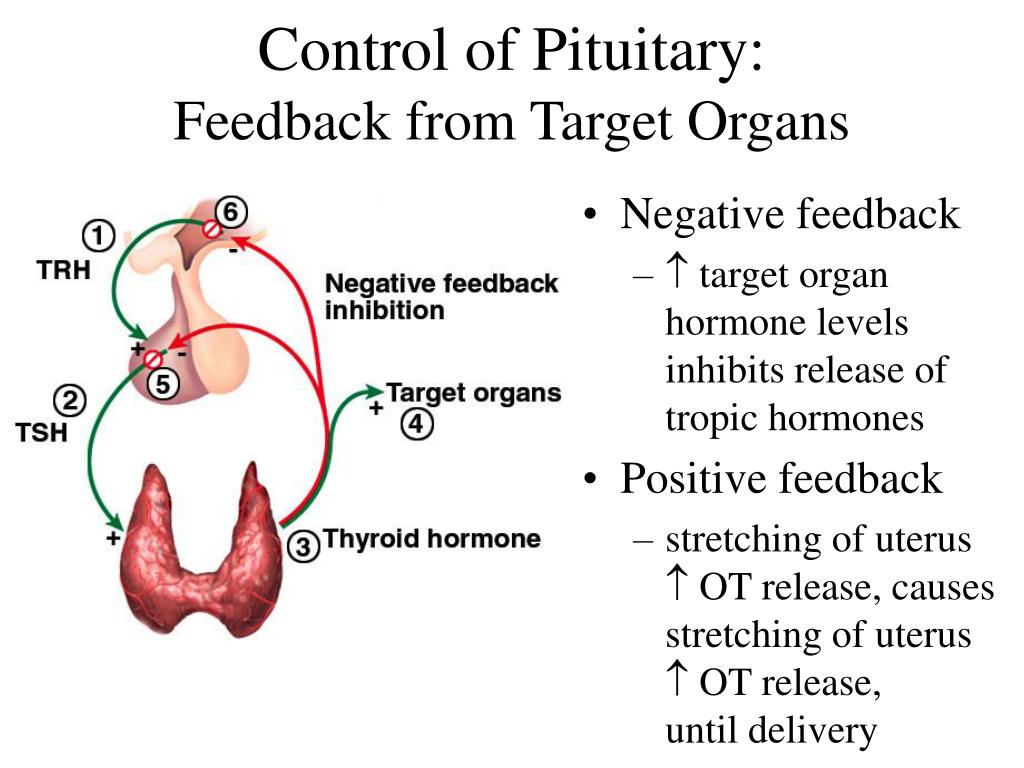 Both conditions are treatable.
Both conditions are treatable.
Why It’s Done
TSH testing is used to:
- diagnose and monitor the treatment of a thyroid disorder
- help evaluate pituitary gland function
Your doctor may order a TSH test if your child has symptoms of hyperthyroidism or hypothyroidism, or shows signs of an enlarged thyroid gland. The TSH test also may be ordered at regular intervals to monitor the effectiveness of treatment if your child is being treated for a thyroid disorder.
TSH tests are routinely ordered for newborns in many states as part of the screening program to enable the prompt diagnosis and treatment of infants with congenital (present at birth) hypothyroidism.
Preparation
Your child doesn’t have to fast or limit activity before the test. However, some medications may affect test results. Check with your doctor to see if you should discontinue any medications until after the test. Extreme stress and acute or chronic illness also can affect TSH test results.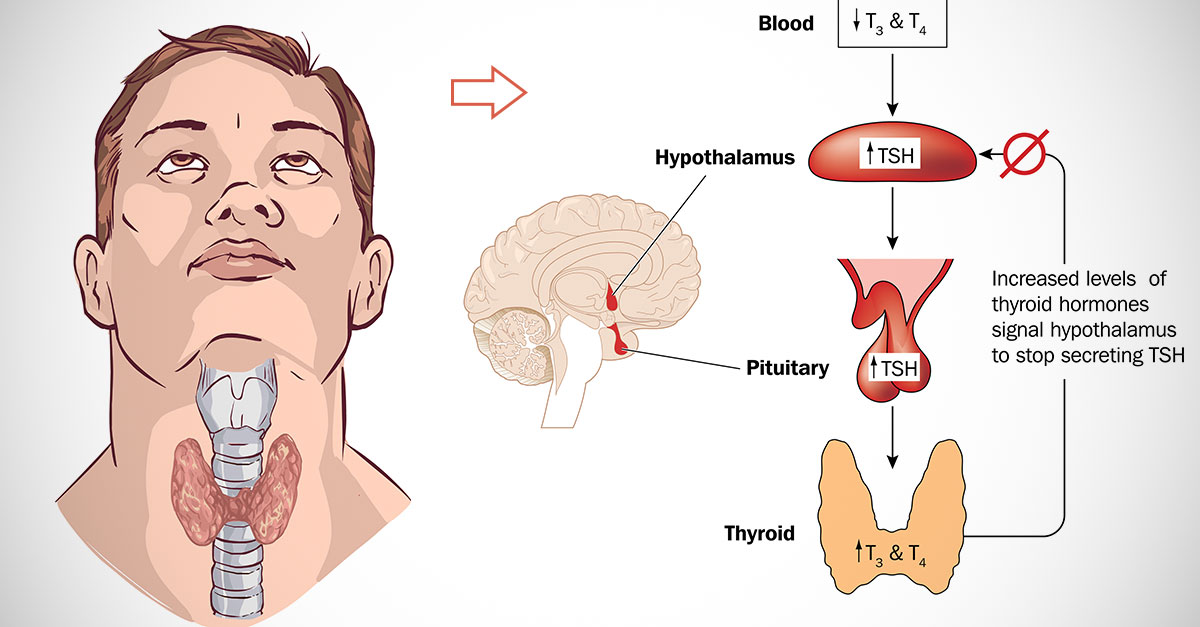
On the day of the test, it may help to have your child wear a T-shirt or short-sleeved shirt to allow easier access for the technician who will be drawing the blood.
page 2
Procedure
A health professional will usually draw the blood from a vein. For an infant, the blood may be obtained by puncturing the heel with a small needle (lancet). If the blood is being drawn from a vein, the skin surface is cleaned with antiseptic and an elastic band (tourniquet) is placed around the upper arm to apply pressure and cause the veins to swell with blood. A needle is inserted into a vein (usually in the arm inside of the elbow or on the back of the hand) and blood is withdrawn and collected in a vial or syringe.
After the procedure, the elastic band is removed. Once the blood has been collected, the needle is removed and the area is covered with cotton or a bandage to stop the bleeding. Collecting the blood for the test will only take a few minutes.
page 3
What to Expect
Collecting a blood sample is only temporarily uncomfortable and feels like a quick pinprick. Afterward, there may be some mild bruising, which should go away in a day or so.
Afterward, there may be some mild bruising, which should go away in a day or so.
Getting the Results
The blood sample will be processed by a machine. The results are commonly available within a day or two.
Whether your child’s results are high or low, an abnormal TSH usually indicates an excess or deficiency in the amount of thyroid hormone available to his or her body. It does not, however, indicate what the specific problem is. To determine the cause, your doctor will usually do additional testing, such as measurement of the blood levels of the hormones produced by the thyroid gland itself.
Risks
The TSH test is considered a safe procedure. However, as with many medical tests, some problems can happen with having blood drawn. These include:
- fainting or feeling lightheaded
- hematoma (blood accumulating under the skin causing a lump or bruise)
- pain associated with multiple punctures to locate a vein
Helping Your Child
Having a blood test is relatively painless. Still, many children are afraid of needles. Explaining the test in terms your child can understand might help ease some of the fear.
Still, many children are afraid of needles. Explaining the test in terms your child can understand might help ease some of the fear.
Allow your child to ask the technician any questions he or she might have. Tell your child to try to relax and stay still during the procedure, as tensing muscles and moving can make it harder and more painful to draw blood. It also may help if your child looks away when the needle is being inserted into the skin.
If You Have Questions
If you have questions about the TSH test procedure, speak with your doctor. You can also talk to the technician before the procedure.
004259: Thyroid-stimulating Hormone (TSH) | Labcorp
Baskin HJ. Endocrinologic evaluation of impotence. South Med J. 1989; 82(4):446-449. 2495570
Brennan MD, Klee GG, Preissner CM, et al. Heterophilic serum antibodies: A cause for falsely elevated serum thyrotropin levels. Mayo Clin Proc. 1987; 62(10):894-898. 3657306
Clark PM, Clark JD, Holder R, et al. Pulsatile secretion of TSH in healthy subjects. Ann Clin Biochem. 1987; 24(Pt 5):470-476. 3310836
Pulsatile secretion of TSH in healthy subjects. Ann Clin Biochem. 1987; 24(Pt 5):470-476. 3310836
Cooper DS. Thyroid hormone treatment: New insights into an old therapy. JAMA. 1989; 261(18):2694-2695. 2709547
Ericsson UB, Fernlund P, Thorell JI. Evaluation of the usefulness of a sensitive immunoradiometric assay for thyroid-stimulating hormone as a first-line thyroid function test in an unselected patient population. Scand J Clin Lab Invest. 1987; 47(3):215-221. 3589485
Greenspan SL, Klibanski A, Schoenfeld D, et al. Pulsatile secretion of thyrotropin mn Man. J Clin Endocrinol Metab. 1986; 63(3):661-668. 3734036
Hamblin PS, Dyer SA, Mohr VS, et al. Relationship between thyrotropin and thyroxine changes during recovery from severe hypothyroxinemia of critical illness. J Clin Endocrinol Metab. 1986; 62(4):717-722. 3949952
Ridgway EC. Thyrotropin radioimmunoassays: Birth, life, and demise. Mayo Clin Proc. 1988; 63(10):1028-1034.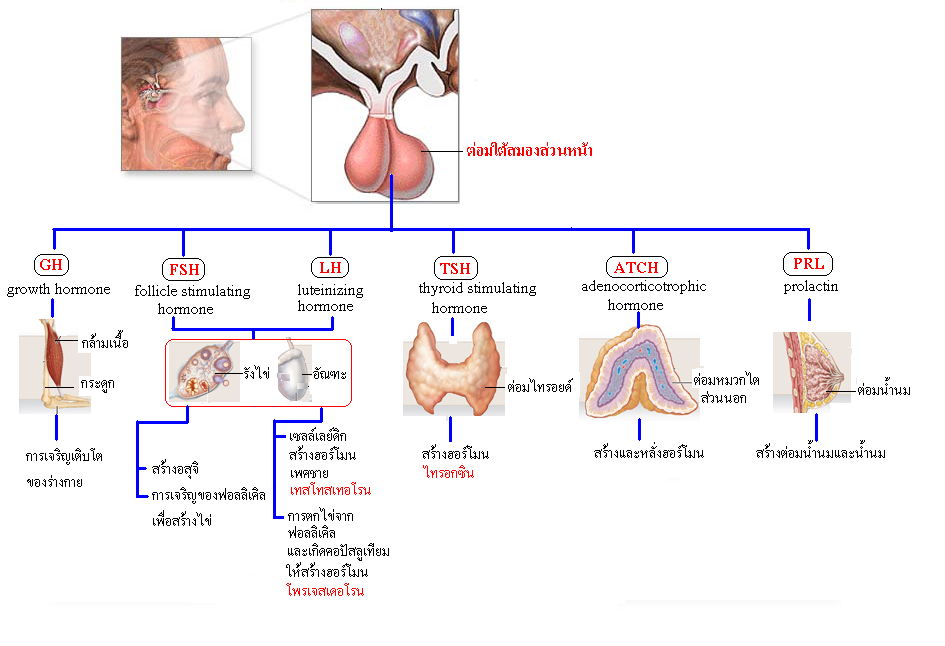 3172852
3172852
Sawin CT, Geller A, Hershman JM, et al. The aging thyroid: The use of thyroid hormone in older persons. JAMA. 1989; 261(18):2653-2655. 2709545
Surks MI, Chopra IJ, Mariash CN. American Thyroid Association guidelines for use of laboratory tests in thyroid disorders. JAMA. 1990; 263(11):1529-1532. 2308185
Watts NB. Use of a sensitive thyrotropin assay for monitoring treatment with levothyroxine. Arch Intern Med. 1989; 149(2):309-312. 2644903
Wehmann RE, Gregerman RI, Burns WH, et al. Suppression of thyrotropin in the low-thyroxine state of severe nonthyroidal illness. N Engl J Med. 1985; 312(9):546-552.3881675
90,000 insufficient formation of thyroid hormones: causes, symptoms, diagnosis and treatment methods on the website “Alpha Health Center”
The difficulty in diagnosing hypothyroidism is that a disease characterized by a violation of the production of thyroid hormones is often hidden. It has several varieties and stages, including latent, when the symptoms of hypothyroidism are weak or not manifested at all. Because of this, it is difficult to detect pathology on your own, without contacting a specialized specialist and an appropriate examination.At the same time, with early diagnosis, the prognosis of treatment is favorable.
Because of this, it is difficult to detect pathology on your own, without contacting a specialized specialist and an appropriate examination.At the same time, with early diagnosis, the prognosis of treatment is favorable.
The Alfa-Health Center Clinic in Samara invites you to make an appointment with an endocrinologist with over 7 years of experience. Here you can go through a complex of laboratory tests and receive a personalized plan of therapeutic measures.
Forms and causes of the disease
Hypothyroidism is often called a disease of megacities: due to the poor environmental situation and the lack of iodine prophylaxis in large cities, it is more common than in rural areas.The disease affects people of different social status and gender. However, it is 5 times more common in women. The age of the patient is also important: after 40 years, the likelihood of developing an endocrine disorder increases.
How thyroid hypothyroidism manifests itself can be determined by its form:
- primary;
- secondary;
- tertiary.

The primary form of pathology is a condition that develops as a result of damage to the thyroid gland.It is characterized by an increase in the production of a hormone called thyroid-stimulating hormone. It develops due to autoimmune disruptions, as well as as a result of previous drug treatment of diffuse and diffuse-nodular goiter, or iodine deficiency. Congenital hypothyroidism is also distinguished, most often due to insufficient development of the thyroid gland.
The secondary form is the result of damage to the hypothalamic-pituitary system, that is, individual sections of the GM, in which the production of TT is disrupted and the functions of the thyroid gland deteriorate.
There is information about the tertiary form of hypothyroidism that it is a consequence of pathological lesions of the hypothalamus. Both of these forms develop due to trauma, surgery, tumors and other conditions that provoke disturbances in the hypothalamus or pituitary gland.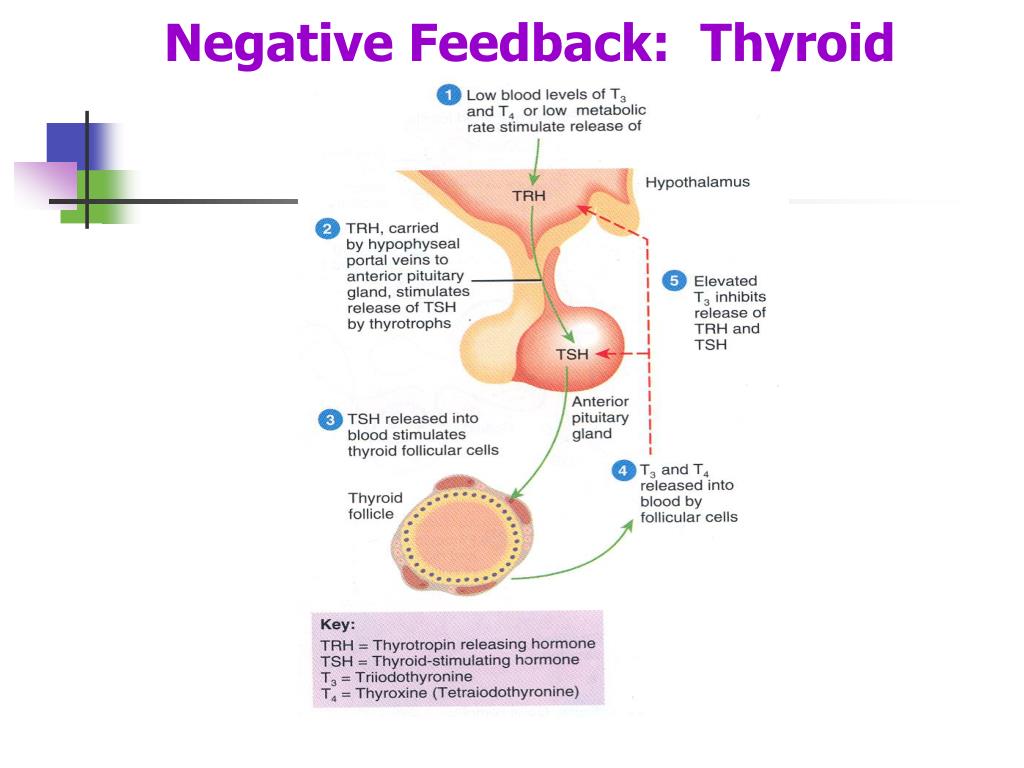
Characteristic features
To understand how hypothyroidism develops, it is worth considering the role played by thyroid hormones, as well as the functioning of this organ.Thyroid hormones are involved in the regulation of metabolic processes, and also stimulate the functioning of internal systems, including the nervous, immune and cardiovascular. The pathological state of the gland will certainly affect the processes of growth and multi-vector development of the body, the activation of the functions of the adrenal glands, mammary and gonads. It is not surprising that deviations in the secretion of hormones of this gland have an extremely negative effect on health and well-being, the work of many organs and systems.
Hypothyroidism is a disease that develops gradually and is difficult to diagnose.The reason is that most of its clinical manifestations are nonspecific. Symptoms characteristic of hypothyroidism are characteristic of other diseases, and sometimes can be attributed to general malaise, overwork, and chronic fatigue.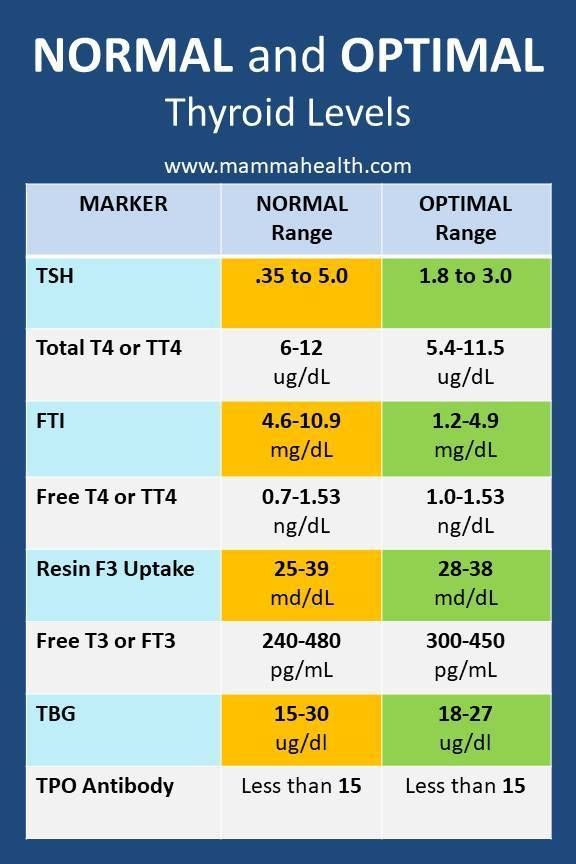 At the same time, the severity of symptoms does not show a correlation with the severity of the disease: sometimes, in patients with laboratory signs of this syndrome, there are no external manifestations of the disease.
At the same time, the severity of symptoms does not show a correlation with the severity of the disease: sometimes, in patients with laboratory signs of this syndrome, there are no external manifestations of the disease.
Rapid weight gain
A common symptom of hypothyroidism is rapid weight gain.It is associated in the overwhelming majority of cases not with the accumulation of fat reserves, but with swelling. Hypothyroidism is usually accompanied by a decrease in metabolic rate and fluid retention. It also leads to weight gain.
The increase in body weight can be associated with other reasons: decreased physical activity and eating disorders. Failures and disruptions in the work of the endocrine system that occur during hypothyroidism are accompanied by causeless weakness, lethargy, and rapid fatigue.As a result, a girl or a man pays less attention to physical activity and gains weight.
Hypothyroidism is often accompanied by an increase in the level of “bad” cholesterol. The reason lies in a decrease in the activity of lipoprotein lipase, which leads to a deterioration in the mechanism of excretion of atherogenic lipids.
Swelling
With an exacerbation of hypothyroidism, symptoms of puffiness appear:
- Puffiness and swelling of the face;
- swelling and swelling of the nasal mucosa;
- Difficulty in nasal breathing;
- lip augmentation;
- the appearance of distinguishable imprints of the dentition on the tongue;
- hearing impairment;
- Thickening of the vocal cords – the voice becomes harsh.
Also, with hypothyroidism, there may be swelling of the upper and / or lower eyelids of one or both eyes, inflammation of the serous membranes of the pleura, peritoneum, pericardium.
Dermatological problems
In case of hypothyroidism, symptoms can also be expressed in regular dry skin, its thickening and coarsening. Patients complain of brittle nails and splitting, hair loss. However, these symptoms can indicate both thyroid disorders and a number of other endocrine disorders.
Diagnosis of hypothyroidism in old age can be difficult due to the fact that changes in the condition of the skin, nail plates and hair are often interpreted as normal manifestations of aging. Also, these symptoms are characteristic of secondary mucinosis, dimphostasis, amyloid lysene. Despite the similarities in external manifestations, the mechanism of development of these diseases is different.
Sexual and Reproductive Function
Frequent symptoms of hypothyroidism in girls and women are irregularities in the menstrual cycle, its frequency, soreness, and an abundance of discharge.The disease can also manifest itself as changes in the breast and mastopathy. Hypothyroidism in women in position increases the risk of miscarriage or placental abruption.
In men, hypothyroidism often leads to erectile dysfunction and decreased libido.
Digestion
The clinical symptoms of hypothyroidism often include a variety of malfunctions in the digestive system. Patients complain of decreased appetite, regular nausea and constipation.Gallbladder dysfunction often occurs. These symptoms can be a manifestation of other diseases, but if they are accompanied by any other signs of hypothyroidism, a visit to an endocrinologist is required.
Cognitive functions and psycho-emotional state
What else is insidious hypothyroidism – symptoms can manifest itself in impaired cognitive functions. Patients report complaints of forgetfulness, absent-mindedness, drowsiness, and tearfulness. In 8-18% of cases, hypothyroidism is associated with depression.
Violations can also manifest themselves in a decrease in tissue sensitivity, in particular, polyneuropathy and deterioration of reflexes. With a severe form of hypothyroidism and the absence of therapy, a decrease in intellectual abilities and even the development of dementia is possible. Their appearance can be prevented only with the help of timely diagnostics.
Respiratory system
According to statistics, from 10 to 80% of cases of the disease are accompanied by sleep apnea syndrome. This symptom is more common in older men.There are two explanations why hypothyroidism manifests itself in this way:
- decrease in the activity of the respiratory center, leading to impaired ventilation of the lungs;
- Protein sweating into the muscles of the pharynx and tongue, which is also accompanied by obstruction.
For this reason, patients with sleep apnea syndrome are shown to undergo an examination for the presence of disorders in the functioning of the endocrine system, in particular the thyroid gland.
Hypothyroidism also leads to a complication of the course and exacerbation of bronchial asthma.
Musculoskeletal system
Latent thyroid hypothyroidism, the symptoms of which are difficult to diagnose, is often similar to the manifestations of thoracic or cervical osteochondrosis. Patients complain of weakness in the hands, tingling and burning sensations, unpleasant “goosebumps” on the skin. With hypothyroidism, myalgia (muscle pain) in the upper extremities is possible.
Disorders in the work of the musculoskeletal system are rarely associated with malfunctions of the endocrine system.But if there are no other reasons for the appearance of these symptoms (injuries, the presence of other chronic pathological conditions), it is advisable to check the state of the thyroid gland.
Cardiovascular system
With hypothyroidism, patients are prescribed a planned ECG. It allows you to identify abnormalities in the work of the heart muscle and blood vessels. Typical consequences of hypothyroidism are circulatory failure, weak and infrequent pulse, low blood pressure. The ECG allows not only to diagnose the syndrome, but also to notice and prevent cardiovascular complications in time.
One of the earliest symptoms of hypothyroidism in women and men is the development of diastolic arterial hypertension. The disease is accompanied by a change in the total peripheral resistance of blood vessels. Also, hypothyroidism plays an important role in the development of coronary artery disease.
Diagnostic Methods
The syndrome is diagnosed by determining the concentration of TT, or thyroid-stimulating hormone. In adult patients, its value normally varies within 0.3-4.2 μIU / ml. Also, the patient is prescribed a study to determine T4 (free thyroxine).
Treatment
Treatment of hypothyroidism in most diagnosed cases consists of lifelong replacement therapy. Exceptions are cases in which a violation of TT production is associated with side effects of drugs or any other substances. The drug of choice for this disease is levothyroxine sodium.
The condition of a patient with hypothyroidism after the appointment of therapy will improve gradually.The first signs of improvement after correctly selected treatment are observed no earlier than 2-3 weeks later. A pronounced therapeutic effect is usually achieved after a few months.
Diet plays an important role in the treatment of hypothyroidism. Patients with this disease are advised to reduce the consumption of easily digestible carbohydrates – to give up bakery products, jam, honey, jam, sugar.
Self-control of the patient over his condition is no less important.In order to diagnose secondary hypothyroidism in time, it is useful to keep a diary, registering changes in body weight, blood pressure and pulse indicators, and general well-being. This measure helps to reduce the risk of developing complications of hypothyroidism and eliminate the side effects of hormone replacement therapy.
Diagnostics and treatment of hypothyroidism in Samara
In the “Alpha Health Center” you can get an endocrinologist’s advice and undergo the necessary complex of laboratory tests.Reception is by appointment. We work every day, seven days a week. Call us!
Thyroid Function Research | Memorial Sloan Kettering Cancer Center
This resource provides information on thyroid function tests (TFTs).
Thyroid function tests are blood tests that help your doctor know if you have enough thyroid hormone in your blood.
to come back to the beginning
A hormone that stimulates the activity of the thyroid gland
The thyroid stimulating hormone (TSH) is produced and secreted by the pituitary gland (a gland in the brain).This hormone stimulates the thyroid gland.
TSH hormone levels
The level of TSH in the blood can be used to judge whether the thyroid gland is too active or not active enough. If you do not have a thyroid gland, your TSH level indicates whether you are receiving the right dosage of thyroid hormone replacement drug.
Normal TSH values vary slightly from laboratory to laboratory. At Memorial Sloan Kettering (MSK), normal values are between 0.55 and 4.78 milli-international units per liter (mIU / L).Depending on the type of thyroid cancer, your doctor may decide you prefer a TSH level below the normal range. Discuss your TSH level with your doctor.
Below you can write the target value of the TSH level.
Your TSH target value: _______________________
- If your TSH level is low, you have hyperthyroidism. This means that your thyroid gland is working too hard.
- With a high TSH level, you are in a state of hypothyroidism.This means an insufficiently active thyroid gland.
For people without thyroid cancer, the main challenge is to keep the TSH level within the normal range.
In some cases of thyroid cancer, it is necessary for the TSH level to be kept below normal for the first few years after the diagnosis of the disease. This can reduce the risk of cancer recurrence. Your doctor will tell you which level is best for you.
to come back to the beginning
Free thyroxine (FT4)
Free Thyroxine Test (FT4) is another blood test that measures the functioning of the thyroid gland. Its results tell us how much “free” or available thyroid hormone is in your blood. At Memorial Sloan Kettering (MSK) FT4 ranges from 0.9 to 1.8 nanograms per deciliter (ng / dL).
- For people without thyroid cancer, the main challenge is to keep the FT4 level within the normal range.
- In thyroid cancer, FT4 levels may approach the upper end of the normal range.
to come back to the beginning
Thyroglobulin
Thyroglobulin is a protein in the blood produced by the cells of the thyroid gland. We measure your thyroglobulin levels to monitor your cancer after treatment. If thyroglobulin levels rise, you may need to get more testing and follow-up to make sure the cancer hasn’t returned.
In medullary thyroid cancer, other research methods are also used to control this disease. Your doctor or nurse will give you more information.
to come back to the beginning
90,000 Do you often get tired and constantly chill? Is it time to get tested for hypothyroidism?
- Dr. Michael Moseley
- BBC
Photo author, BURGER / PHANIE
Photo caption,
Excess weight, increased fatigue or sensitivity to cold can be symptoms of hypothyroidism 9018 One in 70 women and one in 1,000 men in the UK experience symptoms of hypothyroidism.However, with all the prevalence of this ailment, it is still difficult to diagnose and treat it. How many cases of the disease pass by doctors, the host of the BBC’s medical programs, Dr. Michael Moseley, sorted out.
Recently I received an e-mail from the author asking me if I had ever thought about the fact that I might suffer from hypothyroidism, that is, from an underactive thyroid gland. The author decided to ask me about this, because he saw on TV and noticed that I have rare eyebrows, which may be one of the symptoms of the disease.
I have no other symptoms – excess weight, increased fatigue or sensitivity to cold, so I decided not to get tested.
But if you have these symptoms and it seems to you that you may be suffering from thyroid insufficiency – what to do?
For an answer, I went to Dr. Anthony Toft, former president of the British Thyroid Association.
Dr. Toft compares the thyroid gland to the accelerator pedal in a car.It releases hormones that regulate the body’s metabolic rate. If your thyroid is not active enough, your metabolism will slow down.
This means that you are more likely to gain weight. Other symptoms include sensitivity to cold or heat, loss of energy, constipation, low mood, or “blurred” perception.
Photo caption,
Dr. Moseley’s almost invisible eyebrows could be a symptom of hypothyroidism
The main hormones that stimulate the gland are involved in this process, thyroid stimulating hormone (TSH), as well as the hormones triiodothyronine (T3) and thyroxine (T4).They are secreted by the pituitary gland and stimulate the activity of the thyroid gland.
If you develop symptoms of hypothyroidism, doctors will do a blood test to check for elevated TSH levels and low T4 levels.
Elevated TSH levels suggest that the pituitary gland, located in the human brain, sends signals to the thyroid gland to increase the production of the hormone T4, but for some reason, it does not.
In this case, the pituitary gland increases the level of TSH, but the level of T4 remains low.
In other words, the human body requires more thyroid hormones, but the thyroid gland ignores these calls. The result is hypothyroidism.
In such cases, patients are prescribed to take levothyroxine sodium, which eliminates most of the symptoms of the disease and improves the quality of life of patients.
Photo author, Science Photo Library
Photo caption,
Thyroid problems can also be detected with a scan
But, if everything is so simple, why are online forums filled with comments from disgruntled patients?
One problem is the lack of universally recognized international reference ranges for blood tests for hypothyroidism.
From the point of view of Dr. Toft, British doctors interpret the accepted standards too literally and often do not react in any way to an increased level of TSH and T4, if it does not go beyond the range adopted in Britain.
In almost all cases, patients are prescribed a synthetic version of T4, but some patients remain symptomatic. This may be due to the fact that although the thyroid itself is functioning correctly, their bodies do not convert thyroxine in their cells to a biologically active form – triiodothyronine.
In such cases, the patient can take the T3 hormone in pill form. But then another problem arises.
“The price of T3 tablets has skyrocketed in recent years. The cost of a two-month course can be as high as £ 300, although the production of these tablets costs a penny,” says Dr. Toft.
Photo Credit, Science Photo Library
Photo Caption,
Levothyroxine Sodium Tablets
As a result, doctors often refuse to prescribe these drugs.Many patients then buy them overseas over the Internet.
This is not ideal as those taking T3 pills must be monitored as they can cause serious side effects.
Hormonal supplements obtained from the organs of internal secretion of cows and pigs, which contain both T4 and T3, are somewhat cheaper.
But these hormonal supplements are not well understood, and according to Dr. Toft, they are unlikely to be widely used in the foreseeable future.
And some patients may have to admit that there is no effective medication for them and they need to change their lifestyle.
Thyroid gland and pregnancy / Endocrinology / Articles about health / Articles and encyclopedia / madez.ru
The thyroid gland has a huge impact on the reproductive function of a woman. Thyroid hormones:
– regulate the processes of development, maturation, specialization and renewal of all fetal tissues;
– are of exceptional importance for the establishment and development of the fetal brain;
– form the child’s intelligence, learning ability, IQ;
– growth and maturation of the bone skeleton, the reproductive system of the child.
Thyroid hormones are produced from iodine supplied with food. If before pregnancy the production of thyroid hormones is relatively stable, then from the first weeks of pregnancy there is already a change in the functioning of the thyroid gland. Changes in the hormonal system, metabolism in the first trimester of pregnancy directly or indirectly stimulate the woman’s thyroid gland. In the first trimester of pregnancy, the fetal thyroid gland is not yet functioning (until the 15th week of pregnancy) and the high need for thyroid hormones in the fetus, namely the correct and high-quality development of the fetus, the formation of its central nervous system, thyroid gland, and other organs and systems, is provided only for due to the sufficient content of the mother’s hormones, especially in the first trimester of pregnancy, when the organs of the fetus are laid.In general, the production of thyroid hormones during pregnancy normally increases up to 50%.
Even after the start of the synthesis of hormones by the thyroid gland of the fetus in the 2nd half of pregnancy, maternal hormones do not lose their role.
Diseases of the mother’s thyroid gland can have a significant effect on the synthesis of thyroid hormones by the mother’s gland and lead to an insufficient or excess amount of them for the fetus.
So, according to modern ideas about the influence of thyroid pathology on reproduction, several postulates can be formulated:
1.During pregnancy, there is a change in the functioning of the mother’s thyroid gland.
2. Pregnancy is a powerful factor that stimulates the thyroid gland, which under certain conditions can acquire pathological significance.
3.For the normal development of the fetus, especially in the early stages, a normal level of mother’s thyroid hormones is necessary
4. The principles of diagnosis and treatment of thyroid diseases in pregnant women differ significantly from standard therapeutic and diagnostic approaches
5.Both decreased and increased thyroid function can lead to a decrease in reproductive capacity in women and are a risk factor for fetal development disorders.
6. Pregnancy can develop both against the background of hypothyroidism (decreased thyroid function) and against the background of thyrotoxicosis (increased thyroid function)
7. Indications for termination of pregnancy in women with thyroid dysfunction are significantly limited.
8. Indications for surgical treatment of thyroid pathology during pregnancy are significantly limited.
9. During pregnancy, the dysfunction of the thyroid gland is corrected with medications in accordance with the accepted principles of treating pregnant women.
Required examinations.
Currently, examination of thyroid function in healthy women is not included in the mandatory recommendations for preparing for pregnancy. Nevertheless, there are clinical guidelines with a good degree of evidence, accepted throughout the world, which indicate that the best conditions for conception, gestation, and fetal development exist precisely at certain intervals of thyroid hormones (TSH, T4w), both before conception and during during pregnancy, especially in the 1st trimester.
So, the best TSH interval for conception is in the range of 0.4-2.5 MED / l with normal values of T4w. When TSH falls out of the required intervals, it is possible to correct the hormone content.
According to the laws of physiology, TSH in the 1st half of pregnancy should decrease, sometimes quite strongly; the T4 level should rise, sometimes to the upper limit of the norm. In the 2nd half of pregnancy, TSH levels off, increases compared to the low level in the 1st half; T4 can be normal or low normal.
Recently, the reference intervals (permissible content) of thyroid hormones have changed in pregnant women in the 1st, 2nd, 3rd trimesters of pregnancy, an endocrinologist’s consultation is required.
Other approaches to women suffering from thyroid pathology. Constant observation and treatment by an endocrinologist, control of thyroid hormones with a certain regularity, which depends on the type of disease, is necessary.
If you have been assigned the definition of AT / TPO and their increase is detected, you should not sound the alarm.The so-called “carriage of AT / TPO” is a common phenomenon in the population; it is determined in healthy women and does not always have a prognostic value. Among pregnant women, AT / TPO are detected in at least 10% of cases and do not have a pathological effect on the fetus.
Nevertheless, an increase in AT / TPO can be a diagnostic criterion for chr. autoimmune thyroiditis, and also have a prognostic value in the development of postpartum thyroiditis and hypothyroidism (reduced thyroid function) in the future, consultation of an endocrinologist is required.
Ultrasound of the thyroid gland during pregnancy is not contraindicated.
Puncture biopsy of thyroid nodules during pregnancy is not contraindicated at any stage of pregnancy. Nodules larger than 1 cm and with progressive growth, especially during pregnancy, are subject to mandatory biopsy.
Faustova Elena Vyacheslavovna,
endocrinologist of the highest category
Keywords pregnancy, endocryology
Thyroid stimulating hormone (TSH): norm, reasons for increasing and decreasing
Hormonal disorders may not make themselves felt for a long time or hide behind the mask of other diseases.The true cause of the deterioration in well-being can only be identified with the help of laboratory tests for hormones. The indicator of the concentration of thyroid-stimulating hormone in the blood can tell the doctor a lot. In the article we will figure out what this important element of our body is and what is its role.
TSH and its role in the human body
Thyroid stimulating hormone (TSH) is a very important component in the metabolic system. It is produced in the pituitary gland, a special structure of the brain, and controls the thyroid gland, which is why it is called regulatory.TSH stimulates the synthesis of other hormones – triiodothyronine (T3) and thyroxine (T4) [1]. They, in turn, provide energy balance in the body, the synthesis of protein and vitamin A, regulate the motor function of the intestines and the menstrual cycle, are responsible for growth, the functioning of the central nervous (CNS) and cardiovascular systems, for the state of the organs of hearing and vision. In fact, these hormones – TSH, T3, T4 – are closely related to each other. TSH is responsible for the production of T3 and T4, and with an increase in their level, on the contrary, the synthesis of thyroid-stimulating hormone itself is suppressed.This phenomenon is called negative feedback, and the balance of the concentrations of these hormonal substances in the blood depends on it. In addition, TSH ensures the flow of iodine from the blood plasma into the cells of the thyroid gland, accelerates the synthesis of proteins, nucleic acids, phospholipids.
The release of thyroid-stimulating hormone is regulated by the central nervous system and neurosecretory cells of the hypothalamus. If insufficient TSH is formed in the body, the thyroid tissue proliferates, that is, its pathological proliferation.Then the “thyroid” increases in size – this condition is called goiter.
A change in the content of TSH in the body indicates hormonal disorders. This hormone is measured in μIU / ml (micro-international unit per milliliter).
What are hormones?
These are organic substances that have biological activity and are produced by the endocrine glands. Hormones are synthesized in extremely small quantities. They affect many systems of the body through the blood, or, as doctors say, humoral.The activity of hormones depends on a number of conditions, namely: on the number of essential vitamins, microelements, amino acids that are not synthesized by the body entering the body, and a number of other factors.
Thyroid stimulating hormone: normal blood levels
The TSH level changes during the growth and development of the body. Over the years, this figure has stabilized. The norms for different age groups are shown in Table 1.
Table 1. Norms of thyroid stimulating hormone [2].
Age, position | Thyroid stimulating hormone content | |
|---|---|---|
From birth | / 0.7–15.2 | 0.72-11.0 μIU / ml |
4 months | 0.73-8.35 μIU / ml | |
Year | 0.7–5.97 μIU / ml | |
7 years | 0.6–4.84 μIU / ml | |
12 years | 0.51-4.3 μIU / ml | |
18 years old | 0.27-4.2 μIU / ml | |
During pregnancy (1 -th week) 90 365 | 0.21–4.59 μIU / ml |
the indicator occurs around 17-18 pm.This is due to the body’s natural biological rhythms.
Therefore, in order to get an accurate clinical picture, the TSH test should be taken in the morning and on an empty stomach. On the eve, one should quit smoking, drinking alcohol, eating abundant food, and also need to avoid excessive physical exertion and psycho-emotional overload.
TSH and pregnancy
As for pregnant women, their thyroid-stimulating hormone levels may be reduced [3]. TSH levels will vary at different stages of pregnancy.So, in the first trimester, the level of this hormone is very low. However, for some women, this indicator persists throughout the entire period of pregnancy. In the event that the expectant mother is expecting more than one child, but twins or triplets, the TSH may even be zero. The decrease in TSH during pregnancy is due to the increased blood supply to the thyroid gland. At this time, chorionic gonadotropin (hCG, hormone of pregnant women) stimulates the active formation of T3 and T4. And according to the principle of inverse dependence already known to us, TSH decreases.If this does not happen, the development of the fetus and its life are in serious danger. With an increase in the concentration of thyroid-stimulating hormone in the first weeks of pregnancy, doctors usually prescribe drugs containing sodium levothyroxine, which stimulates metabolism and tissue growth.
Women need to understand how important it is during pregnancy to monitor the state of the endocrine system. To do this, you must at least pay close attention to the doctor’s recommendations and not miss scheduled tests.
For information
Everyone knows the positive effect of iodine-containing products on the synthesis of TSH and thyroid hormones [4]. Many people specially purchase so-called iodized salt in stores. However, you should be careful – most manufacturers add potassium iodide (KI) to food salt. When cooking, it evaporates quickly, therefore, there will be no beneficial effect from the use of such salt. In order to prevent thyroid diseases, it is better to use salt, which contains potassium iodate (KIO 3 ) [5].
What does elevated thyroid-stimulating hormone mean?
Only a doctor can decipher the analysis and make an accurate diagnosis. However, it is very useful to understand what deviations from the norm can talk about.
First of all, it should be noted that TSH is the first to respond to thyroid dysfunction. Its level may decrease in the asymptomatic stages of the disease, when the T3 and T4 values are still normal. Therefore, it is recommended to take a TSH test periodically for prophylactic purposes.It is especially important to systematically conduct a study of the level of thyroid-stimulating hormone in the blood with cardiac arrhythmia, prolonged insomnia, goiter, depression, infertility, and sexual dysfunction in men. Children are prescribed this analysis with a delay in mental and sexual development.
The following symptoms may indicate an increased TSH content: lethargy and apathy, drowsiness [6], headaches. Sometimes there is a blanching of the skin, memory impairment, indigestion, weight gain up to obesity, poor heat and cold tolerance.
Various pathologies can be diagnosed. However, sometimes an elevated TSH level is detected simply because all the doctor’s instructions were not followed before taking a blood test. It is also possible that the patient was taking drugs that could affect the indicator (for example, some iodine, antiemetic, anticonvulsant, radiopaque agents, beta-blockers and antipsychotics, lithium salts, amiodarone, clomiphene, furosemide), or experienced excessive exercise.A woman who has been tested for TSH may not have known about her pregnancy, and in expectant mothers, as you know, a deviation in the indicator of this hormone is considered common. In addition, TSH levels rise after removal of the gallbladder and after hemodialysis. In any case, it is necessary to consult a qualified endocrinologist who will identify the true reasons for the increase in TSH levels.
TSH lowered
An experienced endocrinologist can suggest a decrease in TSH in a patient if he has irritability, anxiety, excessive sweating and changes in body temperature, as well as fluctuations in blood pressure, heart failure, weight loss while maintaining appetite, swelling legs and face, memory impairment and insomnia.
Also, a low TSH may be the result of fasting or a low-calorie diet, severe stress, severe inflammation of the pituitary gland, in which hormones are not produced in the required amount. The content of thyroid-stimulating hormone can also decrease while taking a number of drugs: dopamine, thyroxine, triiodothyronine, amiodarone, somatostatin, heparin, cytostatics, corticosteroids, beta-adrenomimetics, acetylsalicylic acid preparations and others.
Thyroid stimulating hormone is undoubtedly irreplaceable – it plays a special role in the functioning of the whole organism.An imbalance in TSH hormones can provoke many diseases that can seriously impair a person’s quality of life. Therefore, it is so important to control the hormonal background and undergo a study of the level of thyroid-stimulating hormone in the blood, not only when alarming symptoms appear, but also for prevention purposes.
All information related to health and medicine is presented for informational purposes only and is not a reason for self-diagnosis or self-medication.
TTG with up to 50% discount
Interpretation of research results
“TTG”
Interpretation of test results is for informational purposes only, is not a diagnosis and is not
replaces the advice of a doctor. Reference values may differ from those indicated in
depending on the equipment used, the actual values will be indicated on the form
results.
A blood test for TSH is, in the vast majority of cases, a sufficient test to assess the function of the thyroid gland. Determination of the concentration of T4 (less often T3) exceeds the diagnostic value of determining the concentration of TSH only in a situation where it is necessary to assess the rapidly changing content of thyroid hormones in the body (monitoring thyrostatic therapy for toxic goiter, monitoring thyroid function in pregnant women).
When testing for TSH hormones, the lower range of concentration values is of greatest interest to the clinician. Estimation of TSH concentration in low ranges is necessary:
- For the diagnosis of thyrotoxicosis, especially subclinical.
- For adequate monitoring of suppressive therapy with thyroid hormone preparations of various forms of goiter.
- For differential diagnosis of true thyrotoxicosis and suppression of TSH levels that occur during pregnancy.
The most common reasons for the discrepancy between the results of the determination of TSH and free T4 with the clinical picture with a detected diffuse increase in the size of the thyroid gland:
- Excessive therapy with thyroid hormones (the level of TSH is lowered, the level of free T4 is normal).
- Recently corrected thyroid hormone therapy (TSH elevated, free T4 normal).
- Taking drugs containing T3 (TSH is lowered, free T4 is normal).
- Insufficient thyroid hormone therapy (TSH is elevated, free T4 is normal)
- Extrathyroid pathology.
- Taking drugs that affect the thyroid status (glucocorticoids, dopamine, etc.)
- Total resistance to thyroid hormones (TSH increased, free T4 increased, clinical euthyroidism).
- TSH-secreting tumors (TSH increased, free T4 increased, clinical thyrotoxicosis).
Unit: mIU / L
Reference values:
Age | TSH, mIU / l | |
men | women | |
up to 25 days | 0.7 – 9.8 | 1.5 – 6.5 |
26 days – 2 years | 0.7 – 5.9 | 1.0 – 5.7 |
38 years | 0.3 – 5.0 | 0.3 – 5.0 |
9 – 10 years old | 1.0 – 3.7 | 0.9 – 4.0 |
11 – 14 years old | 0.8 – 3.9 | 0.7 – 3.4 |
15 – 17 years old | 0.7 – 2.8 | 0.6 – 3.7 |
> 17 years old | 0.4 – 4.0 | 0.4 – 4.0 |
pregnant women: | ||
I trimester | 0.1 – 2.5 | |
II trimester | 0.2 – 3.0 | |
III trimester | 0.3 – 3.0 | |
Increase:
- Primary hypofunction of the thyroid gland.
- Subacute thyroiditis.
- Hashimoto’s thyroiditis.
- Tumor of the pituitary gland.
- Ectopic secretion in breast and lung tumors.
- Endemic goiter.
- Thyroid cancer.
Decrease:
- Primary thyroid hyperfunction.
- Hypothalamic-pituitary insufficiency.
- Itsenko-Cushing’s Syndrome.
- Tumor of the pituitary gland.
- Injury of the pituitary gland.
90,000 Inadequate treatment of hypothyroidism is associated with an increased risk of atrial fibrillation and stroke
Hyperthyroidism is a known risk factor for the development of atrial fibrillation (AF) and other cardiovascular diseases.
At the 89th Annual Meeting of the American Society of Thyroidology, an observational study was presented to assess the potential impact of inadequate hormone replacement therapy for hypothyroidism on the risk of AF and stroke.
The study included 643,054 patients followed up in the United States from 2004 to 2017. within the framework of the veterans affairs program, for which data on at least two measurements of TSH levels were available against the background of hormone replacement therapy (levothyroxine or a combination of levothyroxine and liothyronine – a synthetic analogue of T3).
The study did not include patients with thyroid cancer, for whom suppressive therapy with synthetic analogues of thyroid hormones is used to prevent tumor recurrence, as well as patients in whom fluctuations in TSH levels may be associated with taking medications that affect the function of the thyroid gland ( for example, amiodarone).
As it turned out, a third of the patients had a TSH level that reflected an excessive dose of synthetic thyroid hormone analogues (<0.5 μIU / ml).(In the United States, a TSH level of 0.5-5.5 μIU / ml is considered normal). Too low TSH levels (<0.1 μIU / ml) were expected to be associated with an increased risk of AF - OR 1.16 (95% CI 1.10 - 1.22). TSH in the range of 0.1-0.5 μIU / ml did not increase the risk of AF.
Much more unexpected was another finding: the likelihood of AF increased in patients with insufficient therapy for hypothyroidism with TSH values of more than 5.5 μIU / ml: OR 1.18 (95% CI 1.52 – 1.21).
The risk of stroke increased in all three cohorts of patients with inadequate hypothyroidism therapy: with TSH less than 0.1 μIU / ml, the OR of stroke was 1.16 (95% CI 1.05 – 1.28), with TSH 0.1-0.5 μIU / ml OR was 1.11 (95% CI 1.04 – 1.14), patients with hypothyroidism (TSH ≥ 5.5 μIU / ml) had the highest risk of stroke – OR 1.33 (95% CI 1.27 – 1.39) compared to individuals with euthyroid status.
This study identified another potential modifiable risk factor for stroke – inadequate drug control of hypothyroidism. The mechanisms of increased risk of stroke in hypothyroidism require further study and are not explained only by an increase in the risk of developing arterial hypertension and hypercholesterolemia (since these factors were taken into account in a multivariate model, and the level of TSH turned out to be an independent predictor of stroke).
Based on materials:
D. Reyes Gastelum et al. Understanding the risks of thyroid hormone replacement: is there a relationship between TSH level and atrial fibrillation and stroke? Thyroid.Oct 2019.ahead of print http://doi.org/10.1089/thy.

 It causes stored thyroid hormone to leak out of your thyroid gland.
It causes stored thyroid hormone to leak out of your thyroid gland.:max_bytes(150000):strip_icc()/understanding-thyroid-blood-tests-low-or-high-tsh-3233198_color3-5b84c6f346e0fb00508bffb3.png) Sometimes it can cause trouble with breathing or swallowing.
Sometimes it can cause trouble with breathing or swallowing. You probably need to take the medicines for 1 to 2 years. In some cases, you might need to take the medicines for several years. This is the simplest treatment, but it is often not a permanent cure.
You probably need to take the medicines for 1 to 2 years. In some cases, you might need to take the medicines for several years. This is the simplest treatment, but it is often not a permanent cure. It might be an option for people with large goiters or pregnant women who cannot take antithyroid medicines. If you have all of your thyroid removed, you will need to take thyroid medicines for the rest of your life. Some people who have part of their thyroid removed also need to take medicines.
It might be an option for people with large goiters or pregnant women who cannot take antithyroid medicines. If you have all of your thyroid removed, you will need to take thyroid medicines for the rest of your life. Some people who have part of their thyroid removed also need to take medicines.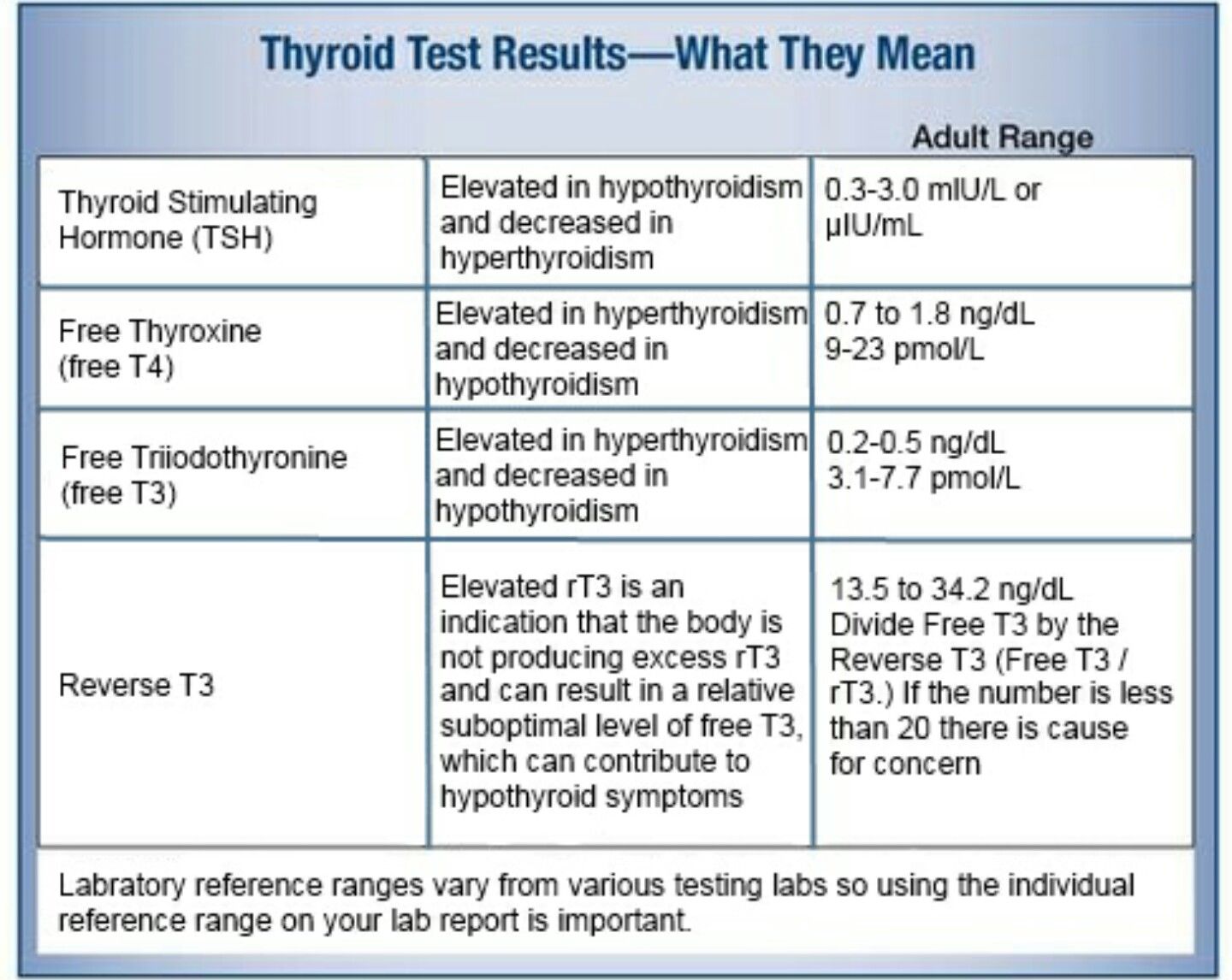

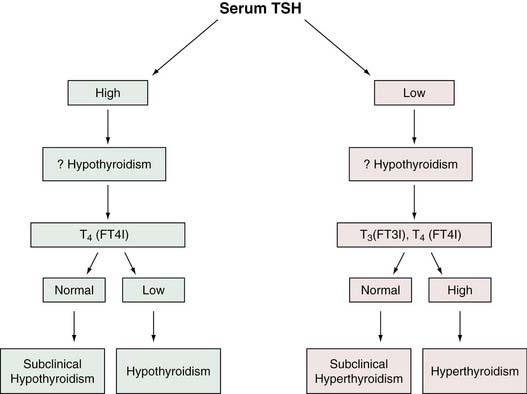 At the time you make the appointment, be sure to ask if there’s anything you need to do in advance.
At the time you make the appointment, be sure to ask if there’s anything you need to do in advance. How can I best manage them together?
How can I best manage them together?